Taiwan is a paradise for bird lovers and an important stop for migratory birds. With its diverse habitats, from high mountains to wetlands, Taiwan is home to over 650 bird species, including 27 endemic species that can only be found on the island.
The rich birdlife of Taiwan also reflects the changing seasons, with some of the most spectacular migratory birds passing through the island twice a year.
Whether you are a serious ornithologist or simply enjoy watching birds, Taiwan offers a fascinating experience for all bird enthusiasts.
In this report, we will explore the birdlife of Taiwan, highlighting its unique species, habitats, and conservation efforts.
1. Phasianidae
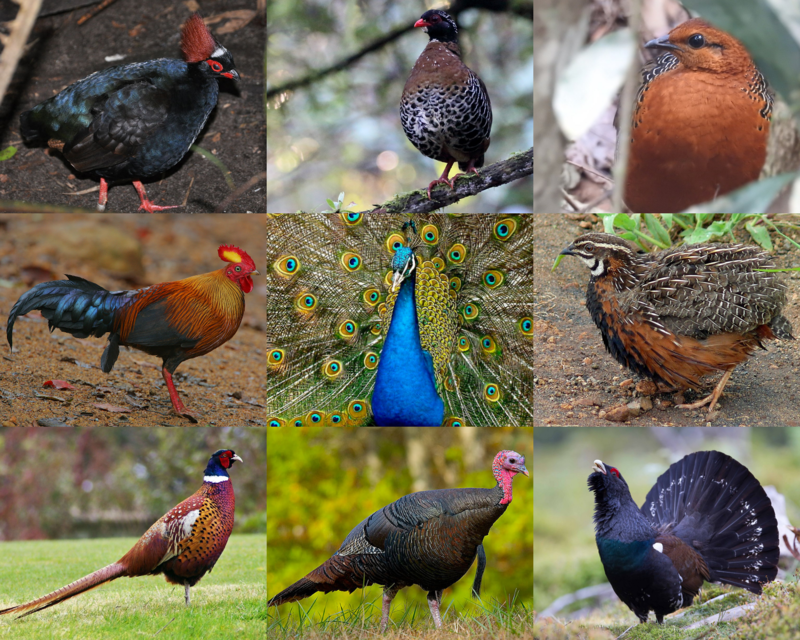
The Phasianidae family of birds is one that contains many popular gamebirds, with a total of 185 species divided across 54 genera.
These heavy ground-living birds include pheasants, partridges, junglefowl, chickens, and turkeys among others like Old World quail and peafowl.
This large family was formerly split into two subfamilies known as the Phasianinae and Perdicinae but this classification has since been changed to reflect more current scientific findings on them.
All these different types of birds have certain things in common such as their strong legs for scratching through leaves or soil looking for food items including insects, seeds, and other vegetation which makes up most of their diet.
They also all tend to be quite colorful in order to attract mates during breeding season when males will often display vibrant feathers or do dances around females in an attempt at courtship ritual displays.
The majority are monogamous creatures too although some may form short-term pair bonds before going off alone again once mating has taken place – either way.
There tends to be very little parental care given by adults after eggs have hatched so chicks need to fend for themselves right away.
Scientific classification:
| Kingdom | Animalia |
| Phylum | Chordata |
| Class | Aves |
| Order | Galliformes |
| Superfamily | Phasianoidea |
| Family | Phasianidae Horsfield, 1821 |
Also Featured In: Most Common Birds in China, Turkey Birds You Should Know
2. Painted-Snipe

Painted snipes are beautiful and unique wading birds found in the Rostratulidae family. They have short legs, long bills, and a striking plumage which distinguishes them from true snipes.
Males tend to be smaller than females with duller overall coloration. There are three species of painted snipe.
The Greater Painted Snipe, Lesser Painted Snipe, and Australian Painted Snipe – all three have different habitats ranging from wetland pools to grasslands or mangroves depending on their region.
These birds feed mainly on earthworms but also consume insects, crustaceans and plant material when available.
As they rely heavily on wetlands for breeding purposes it is important that we protect these precious habitats so that this special bird can continue to thrive.
Scientific classification:
| Kingdom | Animalia |
| Phylum | Chordata |
| Class | Aves |
| Order | Charadriiformes |
| Suborder | Thinocori |
| Family | Rostratulidae Coues, 1888 |
Also Featured In: Queensland Birds You Should Know, New South Wales Birds You Need to See
3. Plovers

Plovers are a family of around 64-68 species of ground-dwelling birds, commonly found in open country such as fields, meadows and tundras.
They have short bills with webbed feet to help them forage through mud or shallow water.
Plover plumage is usually mottled brown though some species may have brighter colors on the head and wings.
These birds feed mainly on insects but can also eat small crustaceans and worms.
Plovers breed during springtime when they dig holes in sandy or pebbled beaches to lay their eggs which hatch after about 3 weeks incubation period.
They use distraction display behaviour by pretending an injury to the predators away from their nests if needed for protecting their young ones.
Scientific classification:
| Kingdom | Animalia |
| Phylum | Chordata |
| Class | Aves |
| Order | Charadriiformes |
| Family | Charadriidae Leach, 1820 |
Also Featured In: Common Uzbekistan Birds, Most Common Romanian Birds
4. Glareolidae
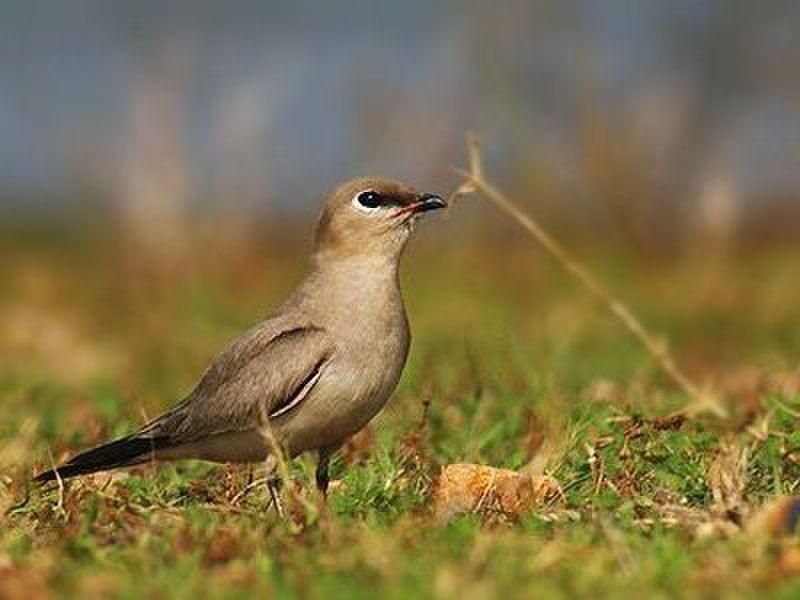
Glareolidae is a family of wading birds, consisting of four genera and 17 species. They are distinguished from other charadrii by their long bills which have a slight downward curve.
Glareolidae live around open grasslands and deserts, where they hunt for insects using the bill to probe into soil or vegetation.
Most species are found in Africa but two pratincoles inhabit parts of Europe and Asia as well.
Coursers tend to be larger than pratincoles with longer legs allowing them to run quickly across sandy dunes while feeding on small animals like lizards or spiders.
Pratincoles feed mainly on flying insects, snatching them out of midair with great agility during flight.
All glareolids share unique features such as large eyes that help it spot prey at night easily making this group one interesting bird family.
Scientific classification:
| Kingdom | Animalia |
| Phylum | Chordata |
| Class | Aves |
| Order | Charadriiformes |
| Suborder | Lari |
| Family | Glareolidae CL Brehm, 1831 |
Also Featured In: Common Algerian Birds , Native Birds of Kazakhstan
5. Light-Vented Bulbul
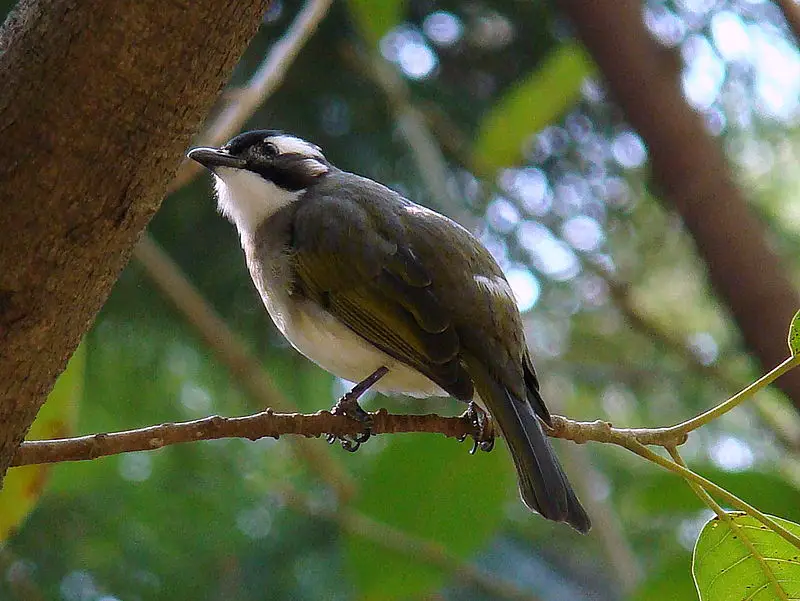
The light-vented bulbul is a species of songbird found in central and southern China, Hong Kong, Macao, northern Vietnam, Japan and Taiwan.
It typically inhabits lightly wooded habitats but can also be seen frequenting towns, suburbs and urban parks.
This bird has olive green upperparts with yellowish underparts; its wings are black tipped with white patches whilst the tail is entirely dark brown.
Its call consists of low whistles that vary from sharp to soft as well as raspy chatters which it uses for communication purposes between members of its flock.
Furthermore this small sized bird feeds on insects such as flies or beetles along with other invertebrates like worms or snails among others making it an important part of many ecosystems across Asia.
Scientific classification:
| Kingdom | Animalia |
| Phylum | Chordata |
| Class | Aves |
| Order | Passeriformes |
| Family | Pycnonotidae |
| Genus | Pycnonotus |
| Species | P. sinensis |
Also Featured In: Hong Kong Birds You Need to See, Common Birds of Hainan
6. Collared Owlet
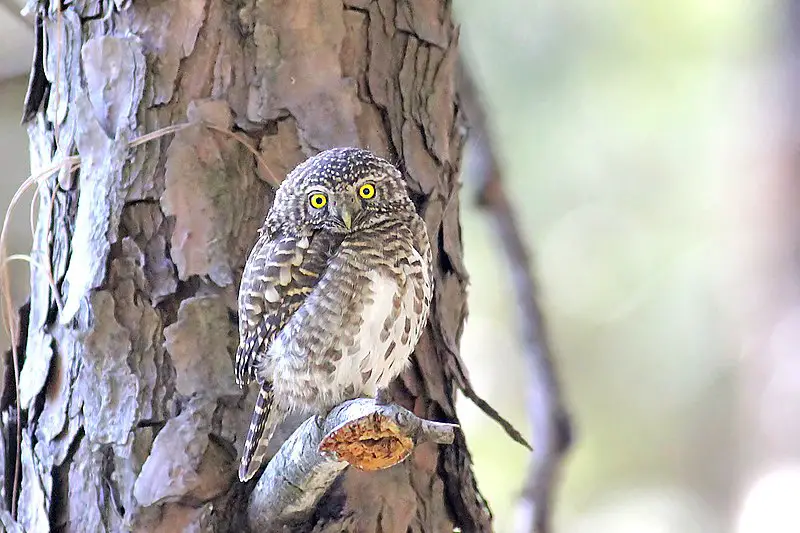
The Collared Owlet is a small species of owl found in Oriental Asia. It measures just 15cm and weighs 60g, making it the smallest owl in its region.
Its natural habitat consists of submontane and montane forests with open spaces.
This bird was first described back in 1836 by English ornithologist Edward Blyth as Noctua brodiei, though over time it has been more commonly referred to as Taenioptynx Brodiei or simply the Collared Pygmy Owl.
As its name implies, this little creature sports an impressive array of collar-like feathers around its neck which makes for quite a striking sight.
The Collared Owlet is generally solitary but can be seen flying together during migration periods where they will form flocks up to several hundred birds strong – truly amazing.
Scientific classification:
| Kingdom | Animalia |
| Phylum | Chordata |
| Class | Aves |
| Order | Strigiformes |
| Family | Strigidae |
| Genus | Taenioptynx |
| Species | T. brodiei |
Also Featured In: Birds Live In Koh Kood,
7. Jacanas
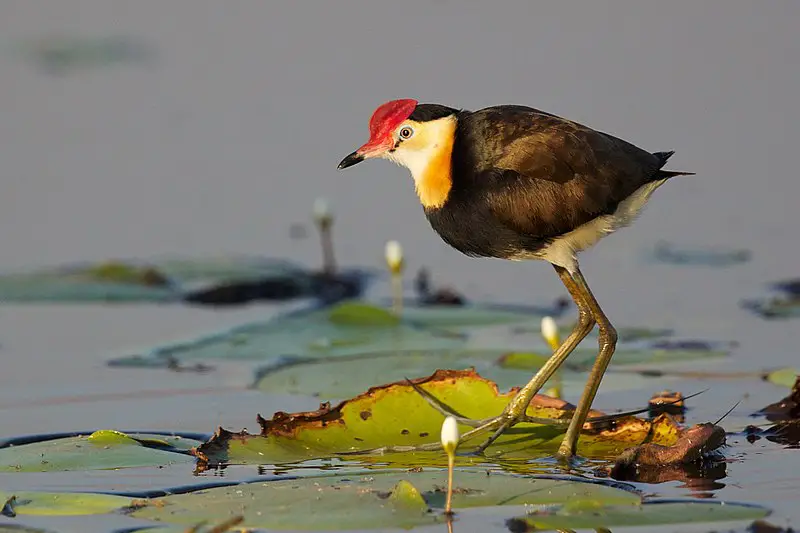
Jacanas are tropical waders belonging to the Jacanidae family. They have distinctive elongated toes and toenails which help them forage on floating or semi-emergent aquatic vegetation.
This adaptation gives them their nickname “Jesus birds” as they seem to be able to walk on water.
The female jacanas are also unique amongst bird species in that they take charge of nest building, incubation and caring for young while males perform courtship displays.
These unusual birds can be found throughout the world’s tropical regions where they inhabit wetlands such as swamps, marshes and shallow lakes with lily pads.
With a wide variety range due their special adaptations these beautiful creatures will surely continue living life at ease around our planet’s warmest waters.
Scientific classification:
| Kingdom | Animalia |
| Phylum | Chordata |
| Class | Aves |
| Order | Charadriiformes |
| Suborder | Thinocori |
| Family | Jacanidae Stejneger, 1885 |
Also Featured In: Beautiful Brazilian Birds, Water Birds Live around Us
8. Northern Storm Petrels

Northern storm petrels are one of the smallest seabirds, inhabiting oceans all over the world.
They have a unique ability to hover over water and pick planktonic crustaceans and small fish from the surface.
Northern storm petrels belong to the genus Hydrobates in family Hydrobatidae, part of Procellariiformes order.
This species was once lumped with austral storm petrel but recent studies show that they weren’t related closely which led them being split into two distinct species now.
These birds can be identified by their dark grey upperparts and wings along with white underparts when seen from afar while feeding on ocean’s surface.
Scientific classification:
| Kingdom | Animalia |
| Phylum | Chordata |
| Class | Aves |
| Order | Procellariiformes |
| Family | Hydrobatidae Mathews, 1912 |
| Genus | Hydrobates F. Boie, 1822 |
Also Featured In: Birds You’ll Find in the Sea, Birds of Sweden
9. Bee-Eater
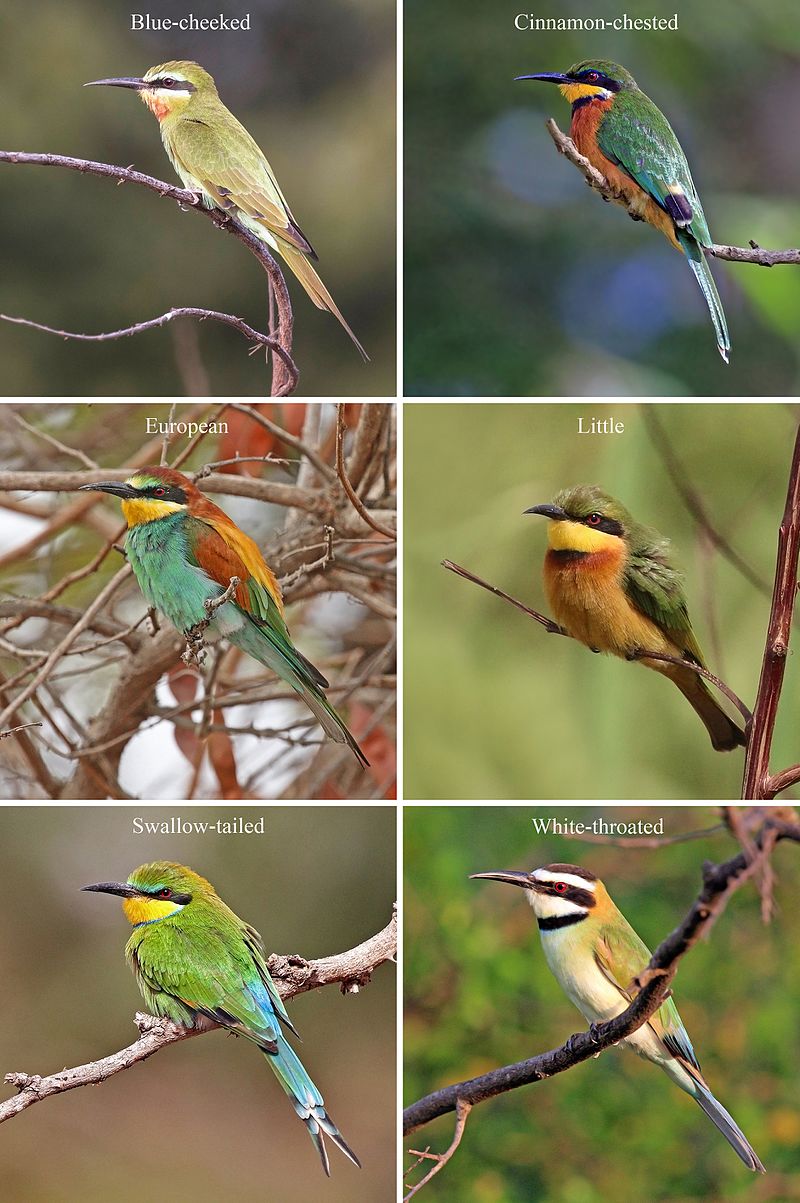
Bee-eaters are one of the most beautiful and vibrant birds in existence. They have a slender body, long wings, down turned bills and their signature elongated central tail feathers which make them instantly recognizable from afar.
Their plumage is incredibly colorful with many shades ranging from blues to greens to reds that glisten when they fly through the air.
These stunning creatures can be found all over Africa, Asia, Southern Europe, Australia and New Guinea where they feed mainly on bees but also other insects like flies or wasps as well as small mammals such as lizards or rodents.
Bee-eaters live in colonies near rivers or wetlands so that they may easily hunt for food while staying close together for safety purposes.
Additionally it allows them to better display their impressive courtship dances during mating season.
Scientific classification:
| Kingdom | Animalia |
| Phylum | Chordata |
| Class | Aves |
| Order | Coraciiformes |
| Family | Meropidae Rafinesque, 1815 |
Also Featured In: Common Nigerian Birds, Syrian Birds You Need to Know
10. Brown Wood Owl
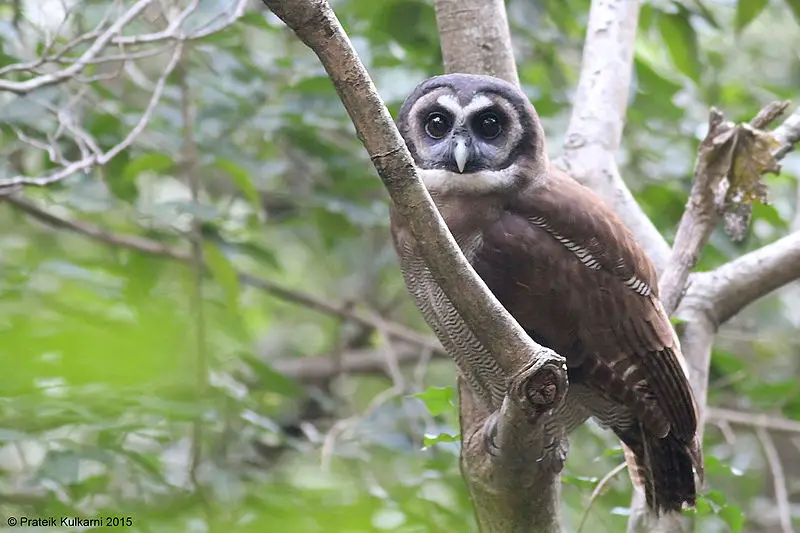
The Brown Wood Owl is a beautiful bird native to parts of Asia. It measures 45-57 cm in length and has unicolored upperparts that vary from light brown to dark gray, while its underparts are barred with pale streaks.
Its head features large yellow eyes and prominent ear tufts which give it an impressive appearance. This species is part of the typical owl family (Strigidae) and belongs to the genus Strix.
The habitat of this species includes dense forests, woodlands, mangroves as well as plantations across India, Bangladesh Sri Lanka Indonesia Taiwan and south China where they breed all year round.
An interesting fact about these owls is that their diet consists mainly of rodents such as rats or mice making them important for controlling rodent populations in agricultural areas.
Scientific classification:
| Kingdom | Animalia |
| Phylum | Chordata |
| Class | Aves |
| Order | Strigiformes |
| Family | Strigidae |
| Genus | Strix |
| Species | S. leptogrammica |
Also Featured In: Most Common Types of Bangladeshi Birds,
11. Black Drongo

The Black Drongo is a small passerine bird of the Dicruridae family, commonly found in tropical southern Asia from Iran through India and Bangladesh to Indonesia.
It has an all black plumage and distinctive forked tail measuring 28 cm long. This omnivorous species feeds on insects such as flies, bees, beetles and moths; it also consumes fruit juices during summer months.
The nest can be built anywhere including open fields or near houses made up of twigs with a cup-shaped inner lining using grasses & hair filled with feathers & cobwebs.
During breeding season they are known to perform aerial acrobatics while chasing away any intruders who come too close to their nests.
Scientific classification:
| Kingdom | Animalia |
| Phylum | Chordata |
| Class | Aves |
| Order | Passeriformes |
| Family | Dicruridae |
| Genus | Dicrurus |
| Species | D. macrocercus |
Also Featured In: Common Birds in Kerala, Delhi Birds You Need to See
12. Black-Faced Spoonbill
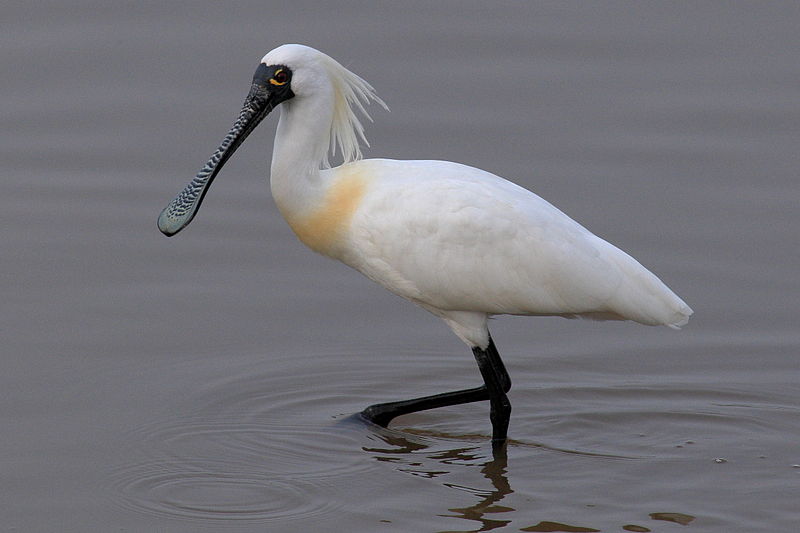
The Black-faced Spoonbill is a rare and endangered species of wading bird, found in eastern Asia.
It has unique physical characteristics like its dorso-ventrally flattened bill which it uses to feed by touch.
They are large birds with white feathers, black face, neck and wings and yellow crowns on their heads.
These solitary birds spend most of the year near coastal wetlands or along tidal mudflats where they search for food such as fish, crustaceans and molluscs using their long beaks to dig into the sand or water vegetation.
Conservation efforts such as creating safe habitats have helped this species survive despite its rarity but more needs to be done if we hope to save them from extinction.
Scientific classification:
| Kingdom | Animalia |
| Phylum | Chordata |
| Class | Aves |
| Order | Pelecaniformes |
| Family | Threskiornithidae |
| Genus | Platalea |
| Species | P. minor |
Also Featured In: Common Birds in Japan, Tokyo Birds You Need to Know
13. Ryūkyū Scops Owl
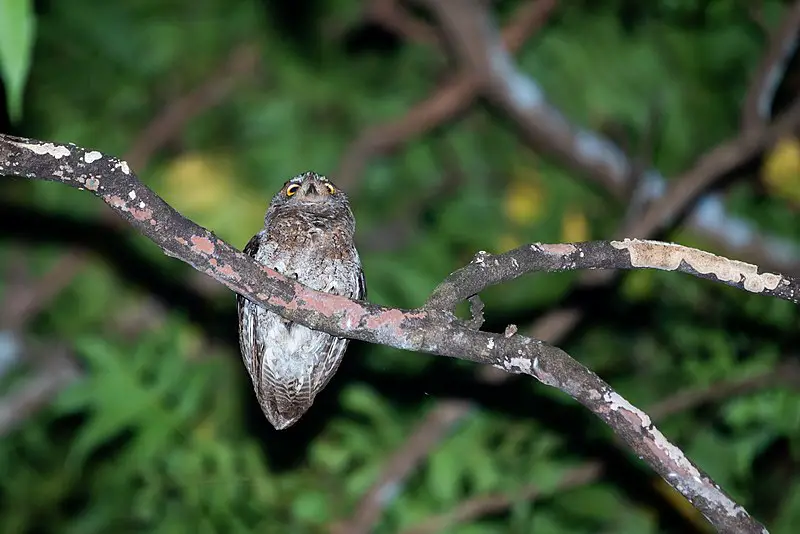
The Ryūkyū scops-owl is a small rufous-brown owl with yellow eyes and an olive gray bill. Its face disk has a cinnamon colored facial ruff, making it quite distinctive from other owls in the area.
Found mainly on islands such as Japan’s Ryukyu Islands, Lanyu Island off south-east Taiwan and the Babuyan Islands of northern Luzon in Philippines, this bird prefers tropical or subtropical evergreen forests for its habitat.
It can be spotted near trees during twilight hours when they come out to hunt insects like moths and beetles.
The species is listed by IUCN as Least Concern due to its wide range of distribution across different island locations.
Scientific classification:
| Kingdom | Animalia |
| Phylum | Chordata |
| Class | Aves |
| Order | Strigiformes |
| Family | Strigidae |
| Genus | Otus |
| Species | O. elegans |
Also Featured In: Beautiful Birds Found in Amami Ōshima,
14. Warbling White-Eye
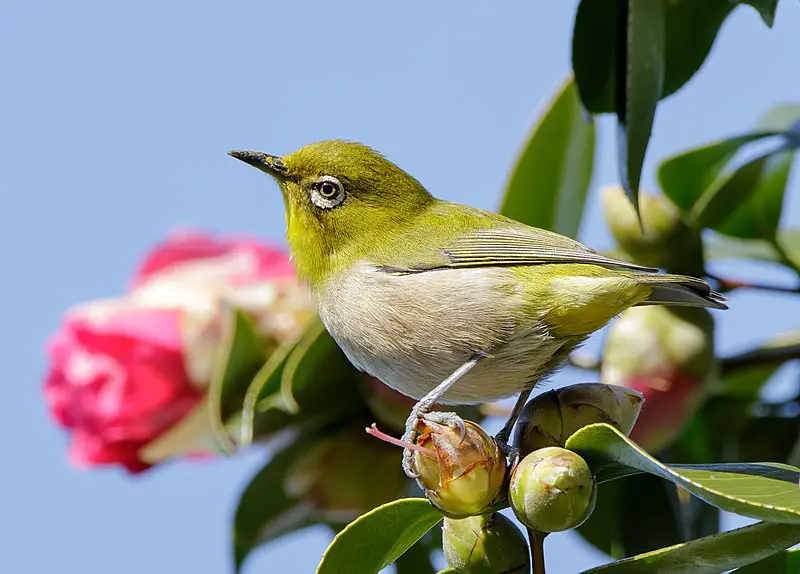
The Warbling White-Eye is a small passerine bird of the white-eye family, found in East Asia from Russia to Japan, Indonesia, Korea and the Philippines.
With its distinct yellow forehead and olive back it stands out amongst other birds. Its beady black eyes are surrounded by bright white rings which gives it an alert appearance.
It has a distinctive warble that can be heard during breeding season when they form large flocks in search for food or shelter.
During winter months these flocks disperse into smaller groups making them quite elusive at times but never far away.
This beautiful little bird is an important part of many local ecosystems so we should take time to appreciate their beauty while protecting them from potential threats like habitat destruction and climate change.
Scientific classification:
| Kingdom | Animalia |
| Phylum | Chordata |
| Class | Aves |
| Order | Passeriformes |
| Family | Zosteropidae |
| Genus | Zosterops |
| Species | Z. japonicus |
Also Featured In: White Oahu Birds, White Birds Commonly Found in Hawaii
15. Pittas
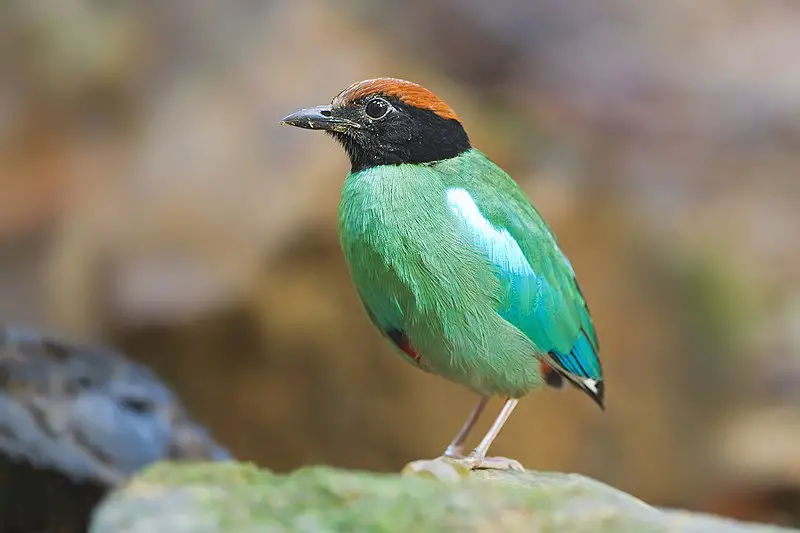
Pittas are a family of passerine birds known for their vibrant colors and unique appearance. They can be found in Asia, Australasia and Africa with around 40 to 42 species existing today.
These Old World suboscines have closest relatives among other bird genera such as Smithornis and Calyptomena.
Pittas inhabit tropical forests where they hop from branch to branch searching for insects or worms on the ground below them.
Their feathers are stunningly colored with combinations of blue, green, copper, purple or even yellow making them stand out amongst others in the forest canopy.
Scientific classification:
| Kingdom | Animalia |
| Phylum | Chordata |
| Class | Aves |
| Order | Passeriformes |
| Suborder | Tyranni |
| Infraorder | Eurylaimides |
| Superfamily | Pittoidea |
| Family | Pittidae Authority disputed.[a] |
Also Featured In: Birds of the Philippines, Birds of Karnataka
16. Shrike
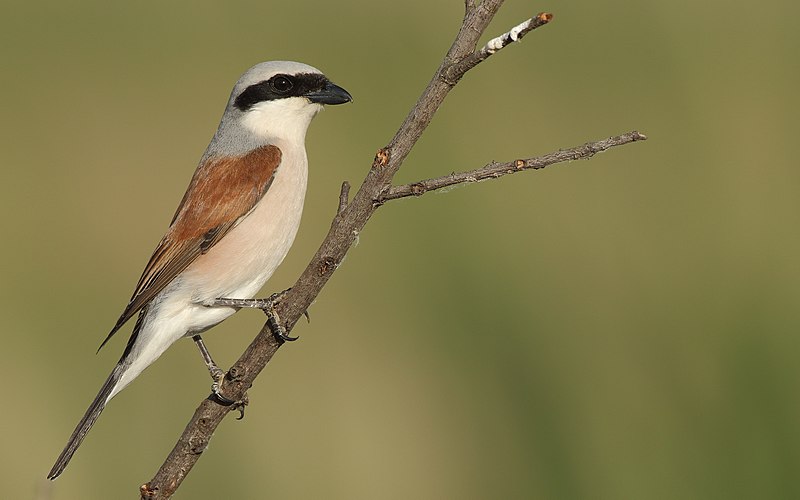
Shrikes are small passerine birds of the family Laniidae, with 34 species in four genera. They get their name from Old English word “scrīc”, which refers to their shriek-like call.
These birds have earned the nickname ‘butcherbirds’ due to their feeding habits; they impale prey on thorns or barbed wire fences for later consumption.
Shrikes also tend to be aggressive predators and hunt a wide range of animals such as insects, small reptiles, rodents and even other smaller bird species.
In terms of physical appearance, these songbirds can vary greatly depending on the specific genus but usually boast a large hooked bill atop an impressive crest along with bright colors like gray, black or brownish hues across its feathers.
It’s clear shrike is quite remarkable creature that has gained notoriety for both hunting prowess and distinctive vocalizations.
Scientific classification:
| Kingdom | Animalia |
| Phylum | Chordata |
| Class | Aves |
| Order | Passeriformes |
| Superfamily | Corvoidea |
| Family | Laniidae Rafinesque, 1815 |
Also Featured In: Egyptian Birds, Italian Birds You Should Know
17. Procellariidae

Procellariidae is a diverse family of seabirds belonging to the bird order Procellariiformes.
These birds are commonly referred to as tubenoses and include fulmarine petrels, gadfly petrels, diving petrels, prions, and shearwaters.
They range in size from the small storm-petrel which measures around 18cm long to the giant albatross which can reach up to 3 meters in length.
Generally found near oceans or coasts where they feed on fish as well as squid and other marine life depending on species.
Many procellariids will also nest inland during breeding season before returning back out at sea for most of their lives.
Their wings have specially adapted feathers that give them incredible gliding abilities allowing them literally fly with minimal effort over vast distances across oceanic regions.
Scientific classification:
| Kingdom | Animalia |
| Phylum | Chordata |
| Class | Aves |
| Order | Procellariiformes |
| Family | Procellariidae Leach, 1820 |
Also Featured In: Most common Birds in France, Bulgarian Birds
18. Falcons And Caracaras
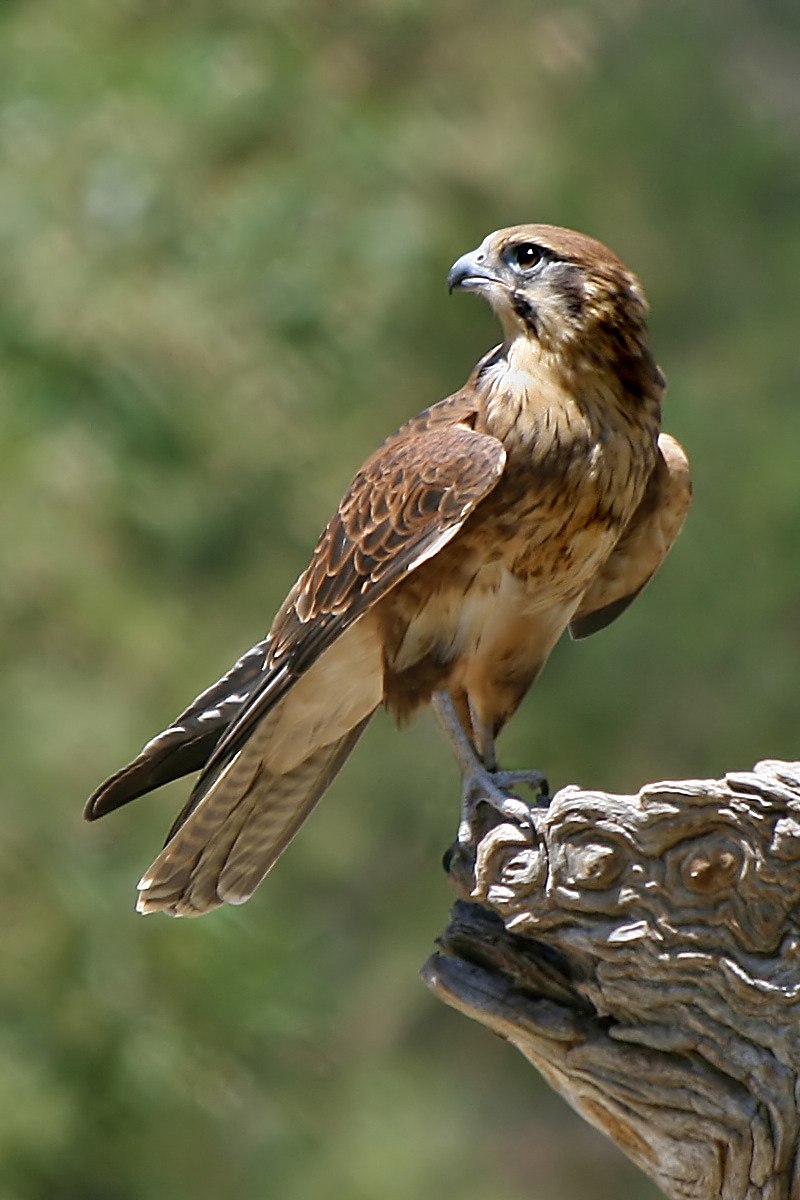
Falcons and caracaras are birds of prey that belong to the family Falconidae. They have impressive sharp talons, hooked beaks and keen eyesight which makes them excellent hunters.
Falcons can reach speeds up to 200 mph when diving for their prey while caracaras use a combination of running and flying to hunt small mammals such as rabbits or rats.
Both falcons and caracaras live in various areas around the world from grasslands, deserts, forests, wetlands or even urban areas where they nest on cliffs or tall buildings.
The diet mainly consists insects but also includes larger animals like reptiles or other birds which they catch by surprise with fast dives out of the sky.
Scientific classification:
| Kingdom | Animalia |
| Phylum | Chordata |
| Class | Aves |
| Order | Falconiformes |
| Family | Falconidae Leach, 1820 |
Also Featured In: Native South Korean Birds, Birds Found in Hungary
19. Barn-Owls
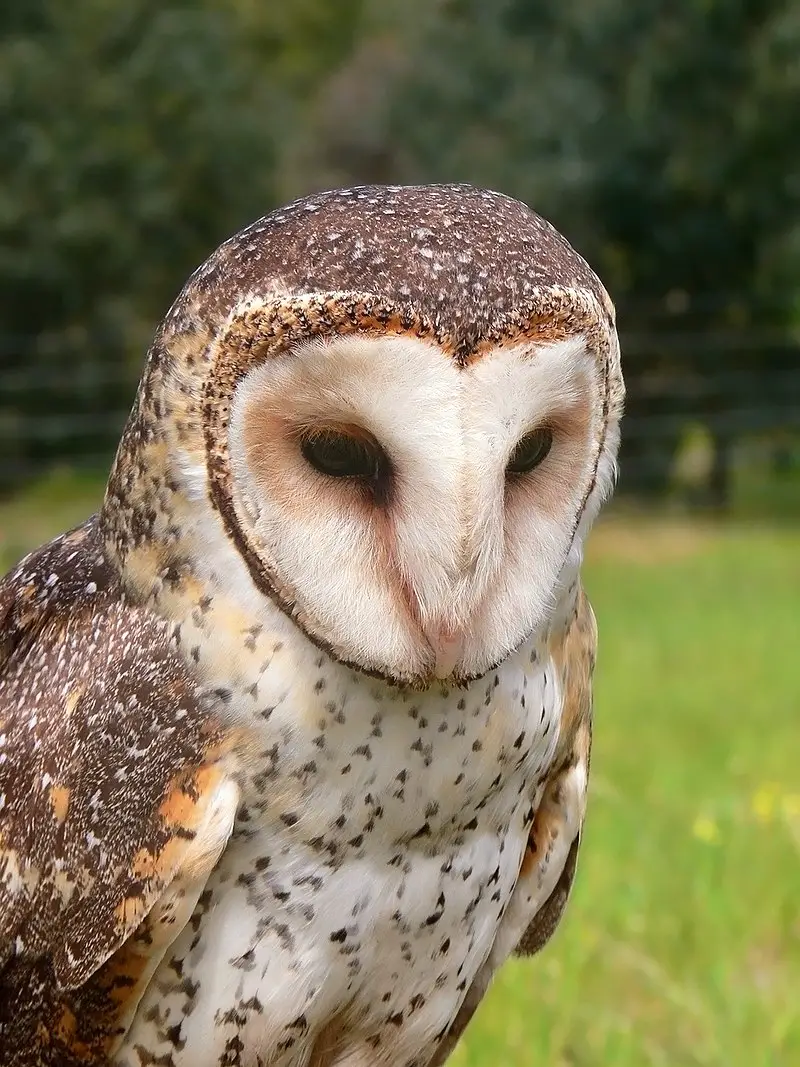
Barn-owls belong to the family Tytonidae and are distinguishable from other owls by their large heads, heart-shaped faces and long legs with powerful talons.
They inhabit a wide range of habitats, including grasslands, deserts, forests and wetlands.
These nocturnal birds hunt mainly small mammals like voles but also consume insects such as beetles or moths when available.
Barn-owls have excellent vision at night which helps them locate prey in even the darkest of conditions.
Their unique call is often heard during dusk or dawn which has earned them nicknames such as “screech owl” or “ghost owl”.
As they help control rodent populations they can be beneficial for farmers who may find barn-owls nesting on their property.
Scientific classification:
| Kingdom | Animalia |
| Phylum | Chordata |
| Class | Aves |
| Order | Strigiformes |
| Family | Tytonidae Ridgway, 1914 |
Also Featured In: Uganda Birds Species, Lebanon Birds Live in Semi-Desert Areas
20. Buttonquail
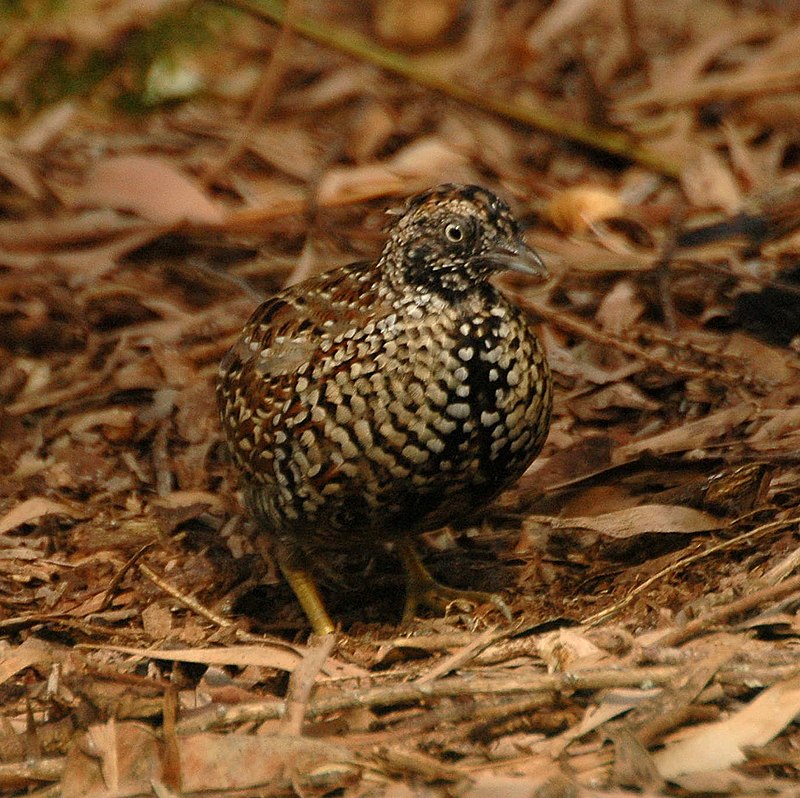
Buttonquails are small, terrestrial birds belonging to the family Turnicidae. They can be found in warm grasslands of Asia, Africa, Europe and Australia.
There are 18 species found across two genera; most being placed under the genus Turnix with a single species known as Ortyxelos.
These birds share a superficial resemblance to quail from Phasianidae but lack any close relation.
Buttonquails avoid flying and instead prefer running on their short legs for navigational purposes.
In terms of physicality they have drab colouring which comprises mostly browns or greys whilst sporting distinctive white patches around their eyes making them easy to identify within dense foliage areas where they usually hide away during times of danger or distress.
Scientific classification:
| Kingdom | Animalia |
| Phylum | Chordata |
| Class | Aves |
| Order | Charadriiformes |
| Family | Turnicidae GR Gray, 1840 |
Also Featured In: Birds of Morocco, Birds that Live around Victoria
21. Laughingthrushes
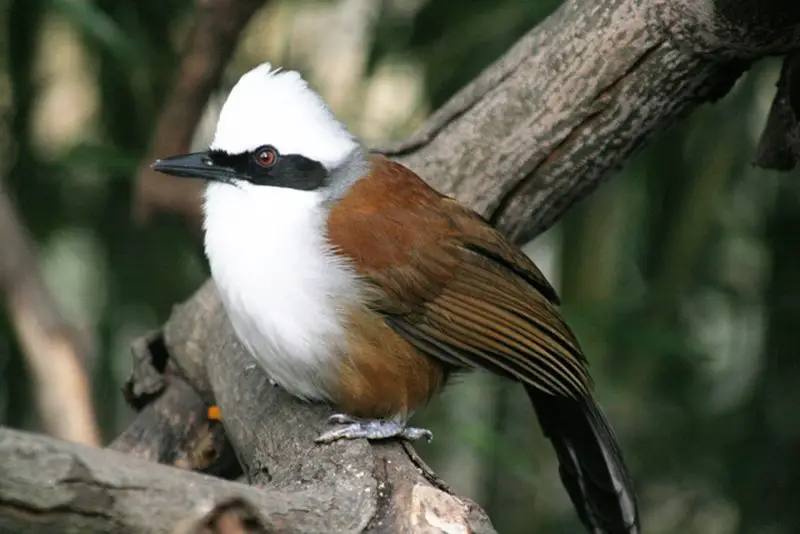
Laughingthrushes are a family of passerine birds found in tropical areas, primarily Southeast Asia and the Indian subcontinent.
They vary greatly in size and coloration but generally they have strong legs and many species are terrestrial or semi-terrestrial.
These birds typically inhabit forests where they feed on insects, fruits, seeds and occasionally small vertebrates.
The diet varies depending on the species as some prefer to forage among foliage while others look for food along the forest floor or take it from trees high up in their habitat.
In general these active creatures live in flocks that can range from just a few individuals to large groups with dozens of members making them quite vocal at times.
Scientific classification:
| Kingdom | Animalia |
| Phylum | Chordata |
| Class | Aves |
| Order | Passeriformes |
| Superfamily | Sylvioidea |
| Family | Leiothrichidae Swainson, 1832 |
Also Featured In: Birds That Live in Iraq, Birds Commonly Found in Slovenia
22. Monarch Flycatcher
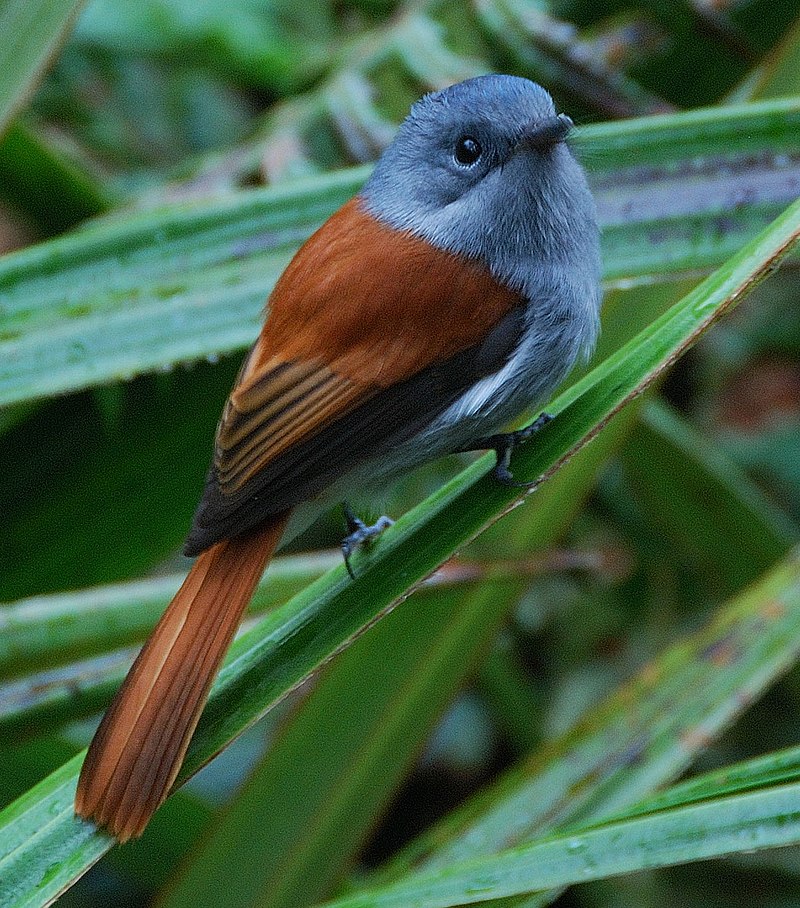
The Monarch flycatcher is a small passerine bird, belonging to the family Monarchidae. It inhabits forest or woodland areas across sub-Saharan Africa, south-east Asia, Australasia and various Pacific islands.
Only some species migrate seasonally. This beautiful little bird has a long tail and feeds mainly on insects it catches in its beak.
Its cup shaped nest can often be found hanging from branches high up in trees where they are safe from predators while incubating their eggs – usually between two to four of them at once.
The adult birds have attractive plumage with hues of blues and greens along with white patches near their tails which make for stunning displays when they take flight during mating season or migratory times.
Scientific classification:
| Kingdom | Animalia |
| Phylum | Chordata |
| Class | Aves |
| Order | Passeriformes |
| Superfamily | Corvoidea |
| Family | Monarchidae Bonaparte, 1854 |
Also Featured In: Common Birds in Saudi Arabian,
23. Cuckooshrike
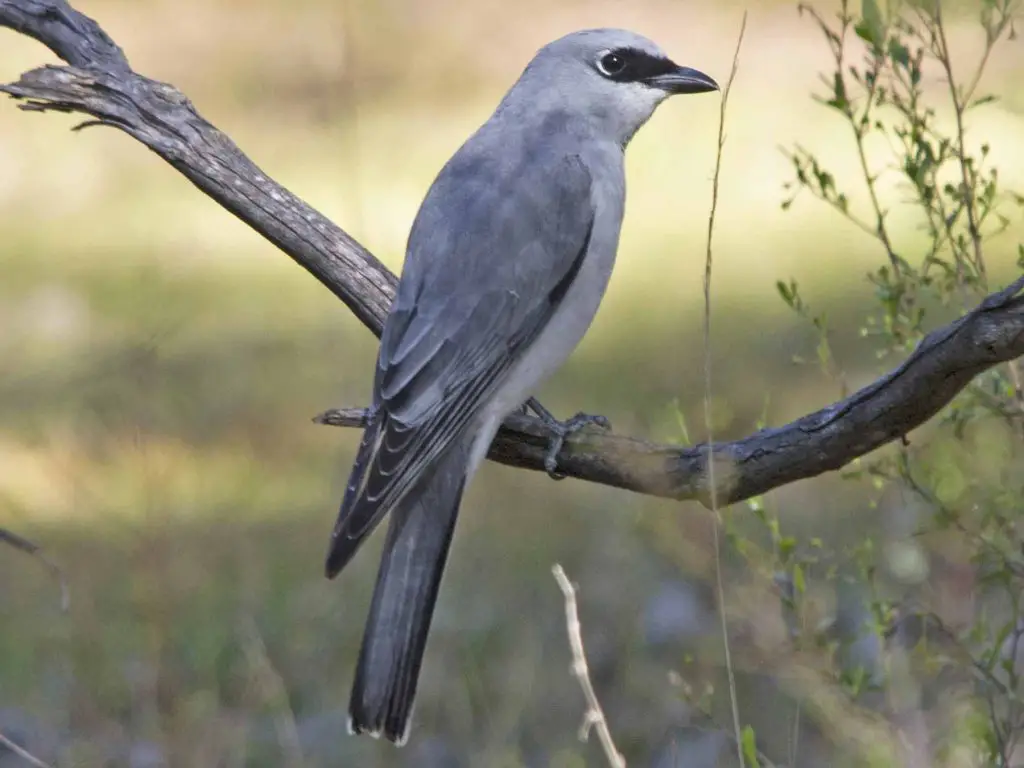
Cuckooshrikes are small to medium-sized passerine birds found mainly in the subtropical and tropical regions of Africa, Asia, and Australasia. They are usually arboreal, feeding on insects or fruit near foliage.
They have a stout bill with long wings and tails that can be used for balancing while perched on branches.
Cuckooshrike plumage is mostly grayish brown but some species may also feature black spots or stripes. The juvenile cuckooshrikes typically show more yellowish coloration than adults do.
These birds form monogamous pairs which often remain together year round defending their territory from other species as well as potential rivals within their own family group.
Scientific classification:
| Kingdom | Animalia |
| Phylum | Chordata |
| Class | Aves |
| Order | Passeriformes |
| Infraorder | Corvides |
| Family | Campephagidae Vigors, 1825 |
Also Featured In: Top Birds of Rwanda, South Australian Birds
24. Drongos
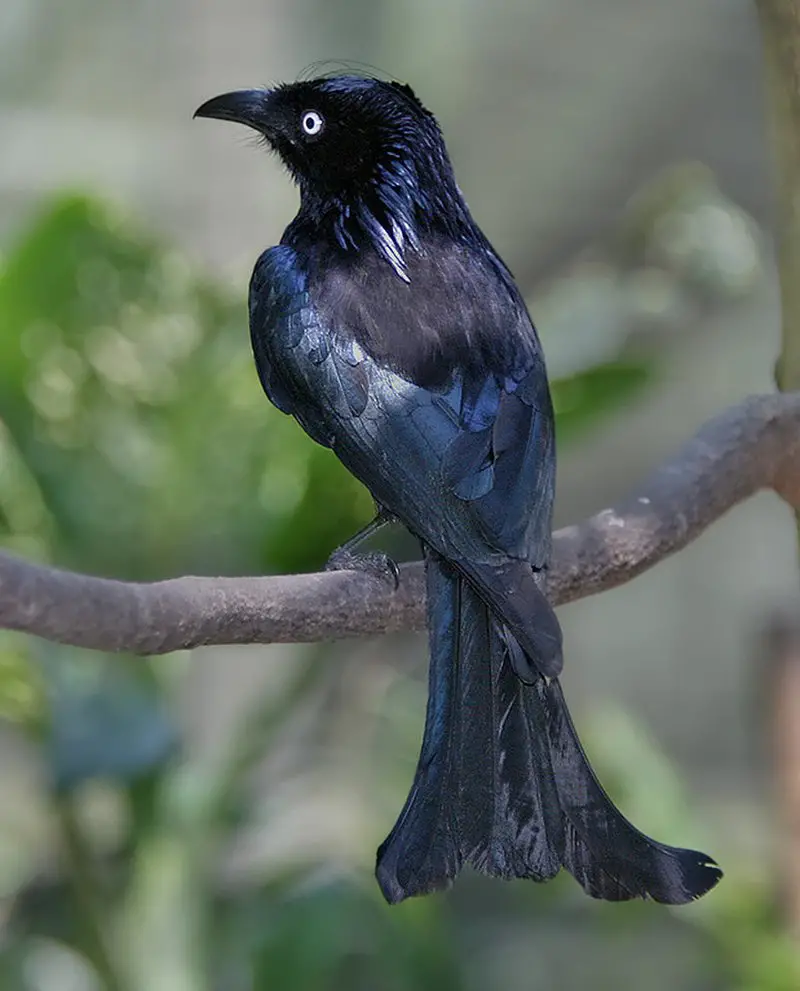
Drongos are an Old World tropical family of passerine birds belonging to the Dicruridae genus.
They have short legs, forked tails and a distinctive upright stance when perched.
Depending on the species they may be mostly black or dark grey in colour with some having elaborate tail decorations.
Drongos feed mainly on insects and small birds – catching them both in flight and from the ground.
They also sometimes eat fruit, nectar and even carcasses.
The drongo’s unique adaptations make it one of nature’s most successful hunters; able to survive almost anywhere in their natural range across Africa, Asia & Australia.
Scientific classification:
| Kingdom | Animalia |
| Phylum | Chordata |
| Class | Aves |
| Order | Passeriformes |
| Superfamily | Corvoidea |
| Family | Dicruridae Vigors, 1825 |
| Genus | Dicrurus Vieillot, 1816 |
Also Featured In: Birds of United Arab Emirates, Savanna Birds You Need to See
25. Black-Naped Monarch
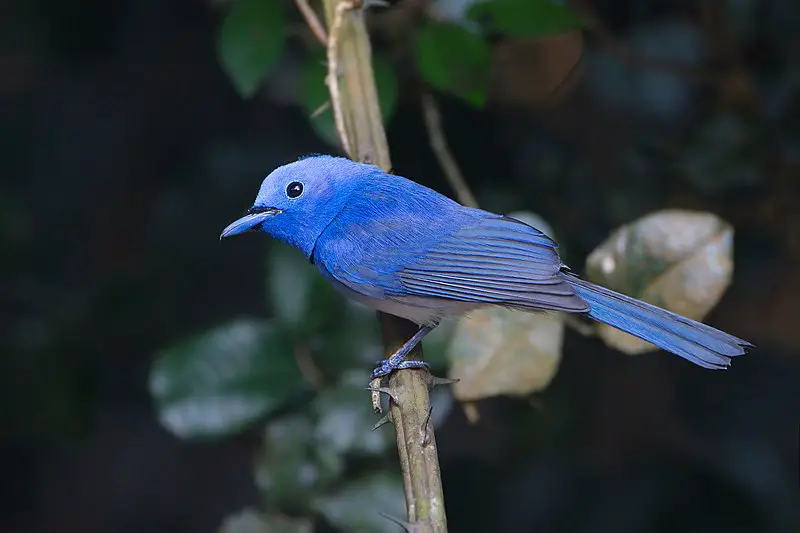
The Black-naped Monarch is a beautiful and agile passerine bird native to Southern and South East Asia.
With its distinct black patch on the back of it’s head, this small but strong species stands out among other birds in the area.
The male has vibrant blue plumage with an elegant narrow black half collar (“necklace”) which makes him even more attractive.
Females are comparatively duller with olive brown wings and light yellowish underparts which helps them blend into their environment better for camouflage purposes.
These birds feed mainly on insects, spiders and fruits making them beneficial as they help reduce pests while also providing nutrients to local vegetation by dispersing seeds from fruit consumption.
Scientific classification:
| Kingdom | Animalia |
| Phylum | Chordata |
| Class | Aves |
| Order | Passeriformes |
| Family | Monarchidae |
| Genus | Hypothymis |
| Species | H. azurea |
Also Featured In: Singapore Birds, Gujarati Birds
26. Malayan Night Heron
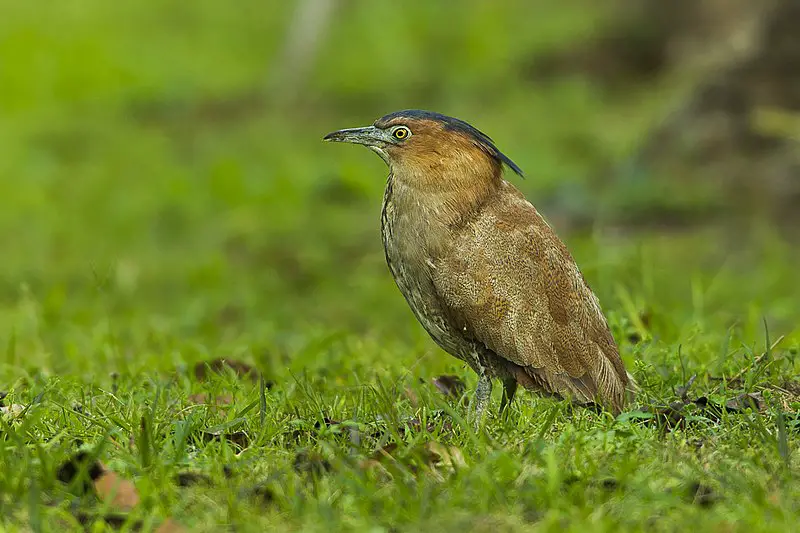
The Malayan night heron is a medium-sized heron found in southern and eastern Asia. It has a distinctive black crest, yellow bill and brownish plumage with white streaks on the neck.
The species can be seen in India, Sri Lanka, Brunei, Nepal, Bangladesh, Myanmar Cambodia Laos Vietnam Thailand Malaysia Singapore China Indonesia Philippines Taiwan Japan.
Being highly migratory it may also turn up at unexpected localities during its long journey between wintering grounds to breeding areas.
They inhabit wetlands such as marshes, lakes riverbanks where they feed primarily on aquatic insects fishes amphibians reptiles small mammals crustaceans mollusks worms larvae etc.
These birds are known for their loud croaking calls which help them locate each other while flying or moving through dense vegetation.
Scientific classification:
| Kingdom | Animalia |
| Phylum | Chordata |
| Class | Aves |
| Order | Pelecaniformes |
| Family | Ardeidae |
| Genus | Gorsachius |
| Species | G. melanolophus |
Also Featured In: Herons Species, Common Birds Found near Ishigaki
27. Grey-Capped Pygmy Woodpecker
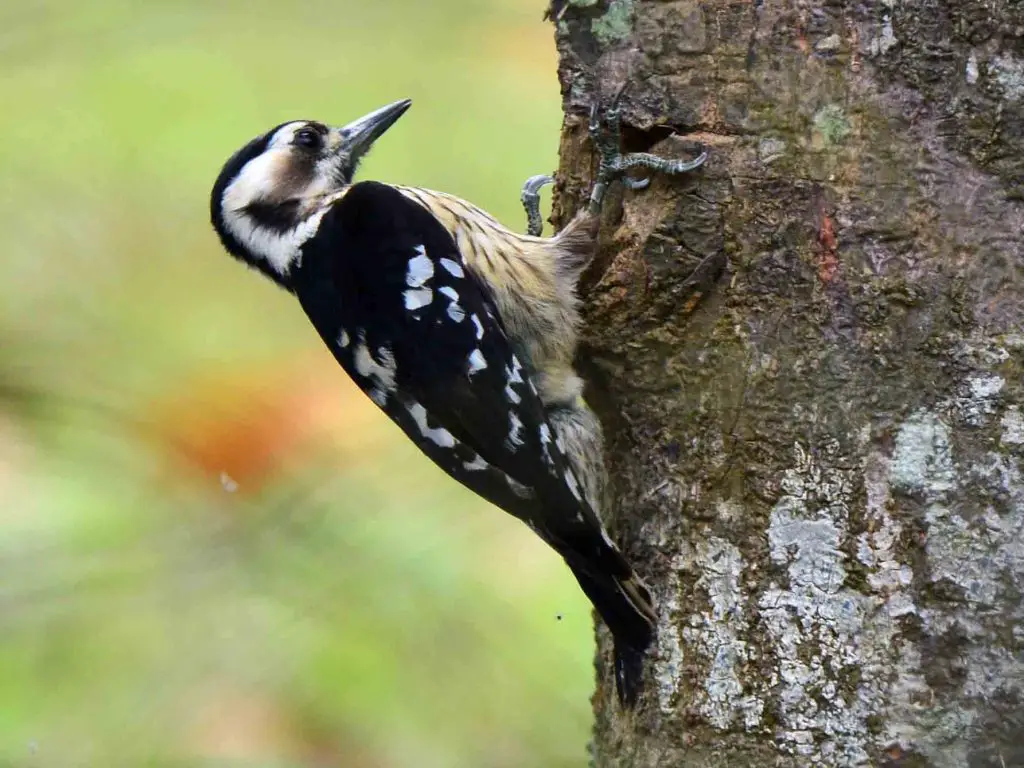
The Grey-capped Pygmy Woodpecker is a small, dark bird of the Picidae family. Found in Asia, it has a subspecies located mainly in Manchuria and Korea.
It has an iridescent black head with grey cap feathers which contrast against its pale yellowish-brown body plumage.
Its wings are barred white on their outer edges while its tail is marked by round spots that alternate between buff and grey colours as they move from base to tip.
This species can be found foraging among tree branches or tapping away at trees looking for food such as insects larvae and fruits which make up most of their diet supplemented occasionally with seeds and nectar from flowers.
They usually nest in cavities excavated into dead wood where both parents take turns incubating eggs until hatching occurs after about 17 – 19 days.
Scientific classification:
| Kingdom | Animalia |
| Phylum | Chordata |
| Class | Aves |
| Order | Piciformes |
| Family | Picidae |
| Genus | Yungipicus |
| Species | Y. canicapillus |
Also Featured In: Woodpeckers Species,
28. Old World Babbler
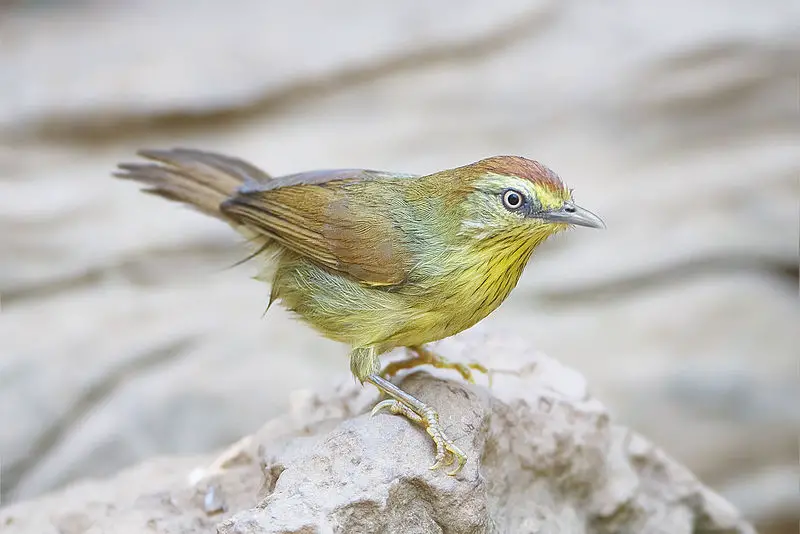
The Old World babbler bird is a passerine bird characterized by soft and fluffy plumage, with diverse size and coloration.
They are commonly found in tropical regions, particularly in Southeast Asia and the Indian subcontinent.
The Old World babblers are one of two groups known as babblers, with the other being the Australasian babblers.
These birds have a unique appearance and create a charming atmosphere with their soft, mellow sound.
They live in a wide range of environments from forests to gardens and thrive on insects and fruits.
Old World babblers are typically social birds that often travel in groups, with some even engaging in communal living.
Despite their somewhat small size, these birds are beloved among birdwatchers, and many people enjoy observing them in their natural habitats.
Scientific classification:
| Kingdom | Animalia |
| Phylum | Chordata |
| Class | Aves |
| Order | Passeriformes |
| Superfamily | Sylvioidea |
| Family | Timaliidae Vigors & Horsfield, 1827 |
Also Featured In: Asian Birds, Birds that Live in Borneo Island
29. Eastern Grass Owl
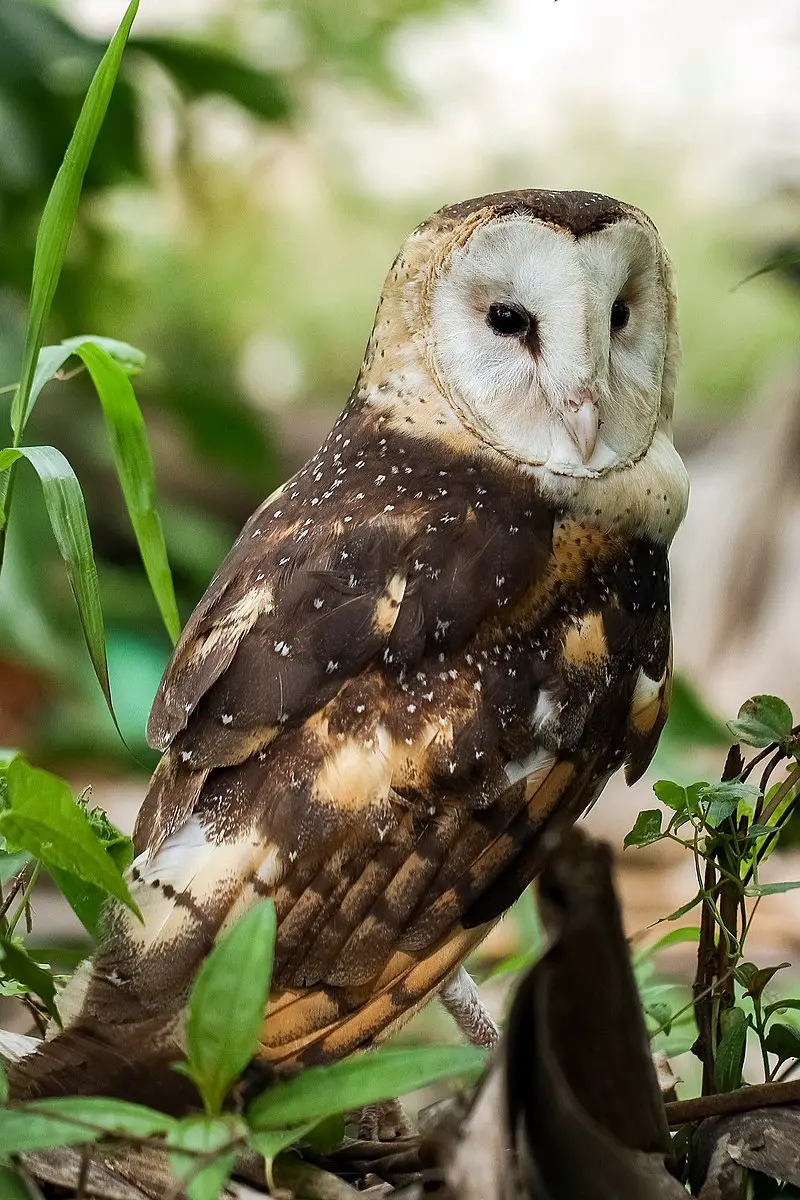
The Eastern grass owl is a medium-sized owl found in countries such as China and Australia. They mainly feed on small rodents.
Some experts believe that this owl is the same species as the African grass owl, while others view it as a distinct species.
It belongs to the Tytonidae family and is also known as the Chinese grass owl or Australian grass owl. The owl is similar in size to other medium-sized owls.
Overall, the Eastern grass owl is a fascinating bird species that continues to be researched and studied by ornithologists and other experts.
Scientific classification:
| Kingdom | Animalia |
| Phylum | Chordata |
| Class | Aves |
| Order | Strigiformes |
| Family | Tytonidae |
| Genus | Tyto |
| Species | T. longimembris |
Also Featured In: Birds that Charles Darwin Studied, Birds of New Caledonia
30. Fantails
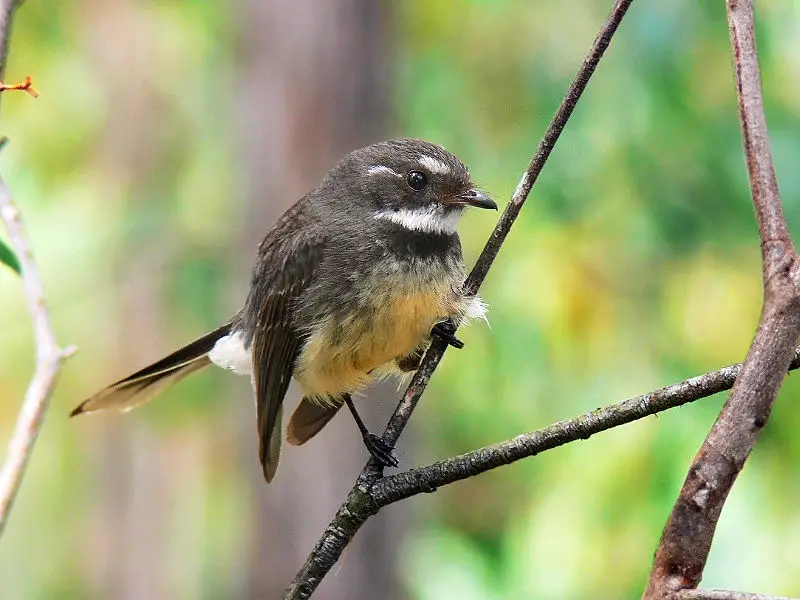
Fantails are small, insectivorous birds that belong to the family Rhipiduridae. They are found in the Australasia, Southeast Asia, and Indian subcontinent.
These birds are known for their distinctive long tails that fan out beautifully when they are in flight. Fantails are agile and skilled fliers, thanks to their broad wings and lightweight bodies.
They feed mainly on insects that they catch mid-air with their sharp beaks. Fantails are social birds and are often seen in pairs or flocks.
They are curious and friendly and are known to approach humans with ease.
Some species of fantails are known for their vocalizations and can often be heard singing sweet melodies.
Overall, fantails are delightful birds to observe and are a valuable part of their ecosystem.
Scientific classification:
| Kingdom | Animalia |
| Phylum | Chordata |
| Class | Aves |
| Order | Passeriformes |
| Superfamily | Corvoidea |
| Family | Rhipiduridae Sundevall, 1872 |
Also Featured In: Guam Birds You Need to See, Birds that Live in Kangaroo Island
31. Taiwan Blue Magpie
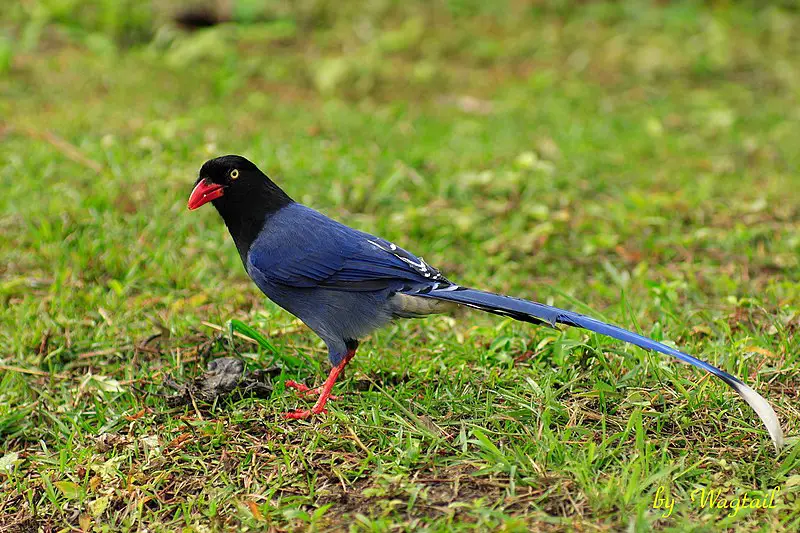
The Taiwan blue magpie is a beautiful bird belonging to the crow family. Endemic to Taiwan, it has stunning blue feathers and a long tail that gives it the nickname of “long-tailed mountain lady” in Chinese.
The bird was first collected and described by Robert Swinhoe and John Gould. The bird’s scientific name is Urocissa caerulea.
This bird is also known as the Formosan blue magpie. The bird is a symbol of good luck and good fortune in Taiwanese culture.
Its habitat includes forests, farmland, and urban areas. The Taiwan blue magpie is omnivorous, feeding on insects, fruits, and small animals. It is a unique and important part of Taiwan’s natural heritage.
Scientific classification:
| Kingdom | Animalia |
| Phylum | Chordata |
| Class | Aves |
| Order | Passeriformes |
| Family | Corvidae |
| Genus | Urocissa |
| Species | U. caerulea |
32. Swinhoe’s Pheasant
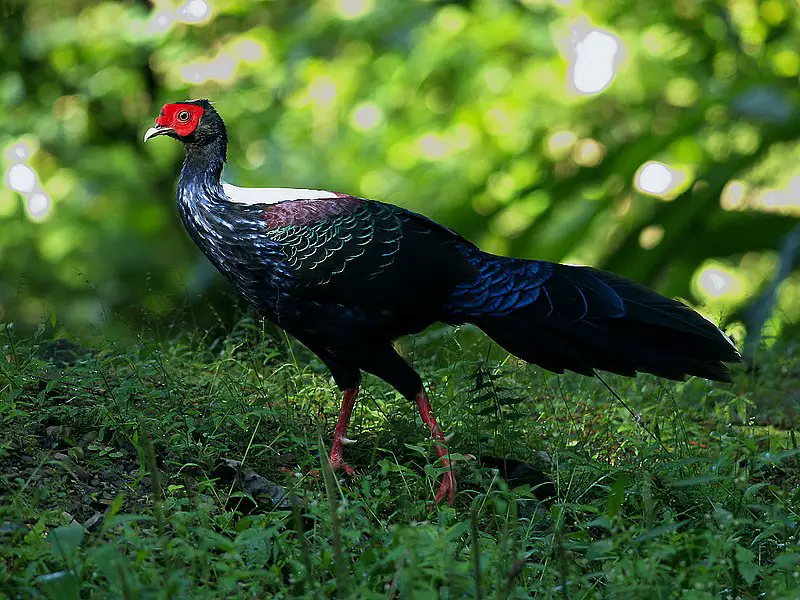
Swinhoe’s pheasant, also known as Taiwan blue pheasant, is a unique bird that belongs to the pheasant subfamily in the family Phasianidae.
This bird is a native of Taiwan and is considered one of the unofficial symbols of the country due to its resemblance to the national flag’s colors.
Apart from its association with Taiwan, this bird is a magnificent creation of nature with its blue-green feather plumage, long tail feathers, and red facial skin patches.
Swinhoe’s pheasant is a ground-dwelling bird, and it prefers to inhabit forests and mountains. Unfortunately, the population of this bird is declining due to habitat loss and hunting.
Despite its endangered status, the Swinhoe’s pheasant remains a vital part of Taiwan’s biodiversity and a fascinating bird to observe in the wild.
Scientific classification:
| Kingdom | Animalia |
| Phylum | Chordata |
| Class | Aves |
| Order | Galliformes |
| Family | Phasianidae |
| Genus | Lophura |
| Species | L. swinhoii |
33. Yellow Tit
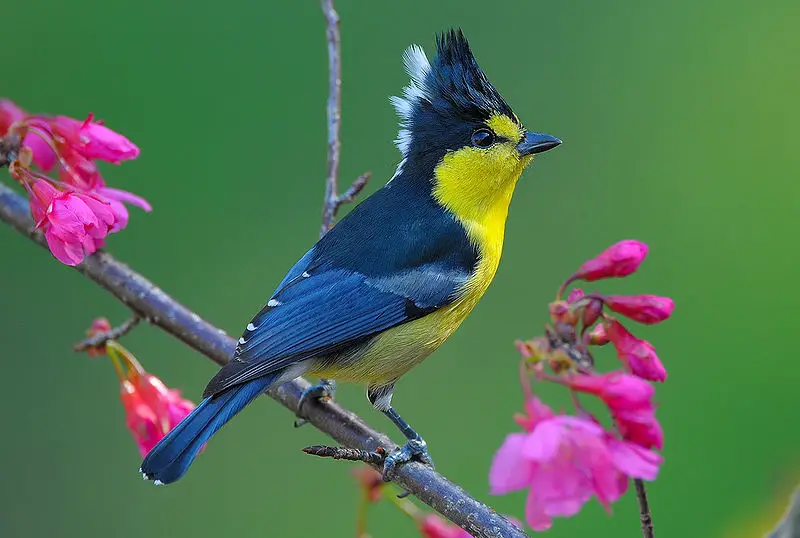
The Yellow tit, also known as Taiwan yellow tit or Formosan yellow tit, is a unique bird species found only in central Taiwan. Its natural habitat is the montane temperate forest, where it resides in small populations.
However, the bird’s population is declining due to its large-scale capture for trade purposes, and it is currently classified as Near Threatened by the IUCN.
The Yellow tit is a member of the Paridae family, known for their curious and intelligent behavior.
These birds have a vibrant yellow plumage, making them easily distinguishable from other bird species.
Despite being a small bird, the Yellow tit has captured the attention of ornithologists worldwide because of its restricted range and unique characteristics.
Scientific classification:
| Kingdom | Animalia |
| Phylum | Chordata |
| Class | Aves |
| Order | Passeriformes |
| Family | Paridae |
| Genus | Machlolophus |
| Species | M. holsti |
34. Taiwan Hwamei
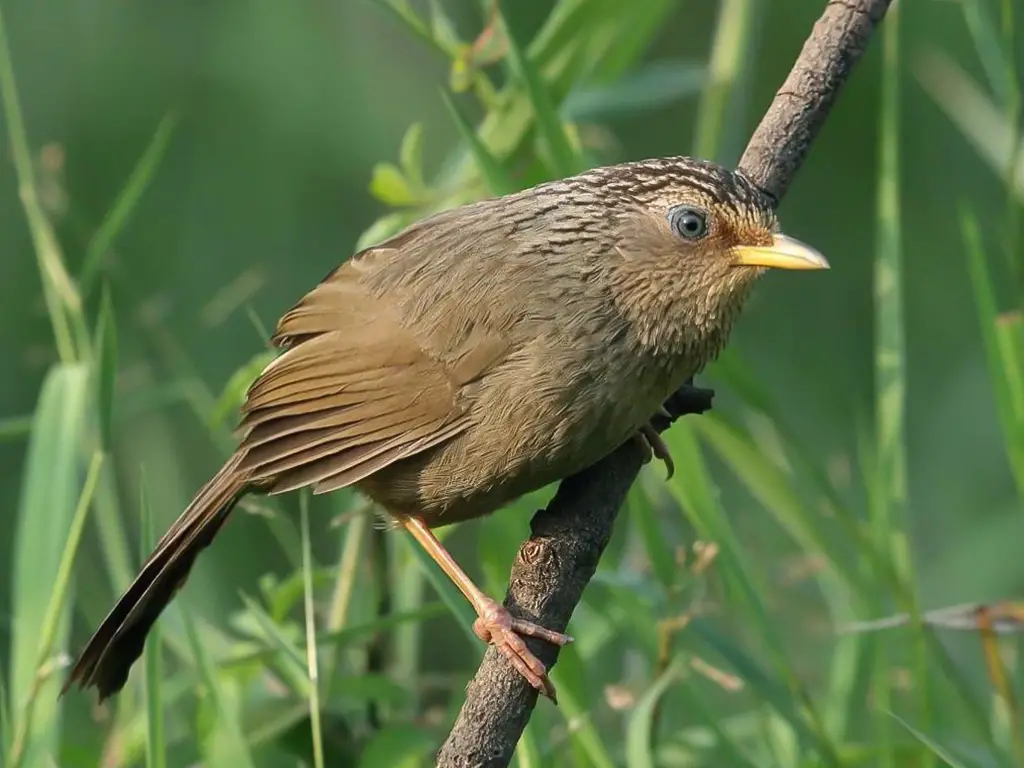
The Taiwan hwamei is a bird species that belongs to the Leiothrichidae family. This passerine bird is endemic to Taiwan and was first described in 1859 by Robert Swinhoe.
Formerly considered a subspecies of the Chinese hwamei, it has since been recognized as a separate species.
It is estimated that the Taiwan hwamei diverged from the Chinese hwamei around 1.5 million years ago.
These birds are known for their distinctive calls and their ability to mimic other bird species. Their diet consists of insects, fruits, and seeds.
Their population is currently stable, but their habitat is under threat due to human activities such as deforestation and land development.
Conservation efforts are being made to ensure the survival of this unique bird species.
Scientific classification:
| Kingdom | Animalia |
| Phylum | Chordata |
| Class | Aves |
| Order | Passeriformes |
| Family | Leiothrichidae |
| Genus | Garrulax |
| Species | G. taewanus |
35. Styan’s Bulbul
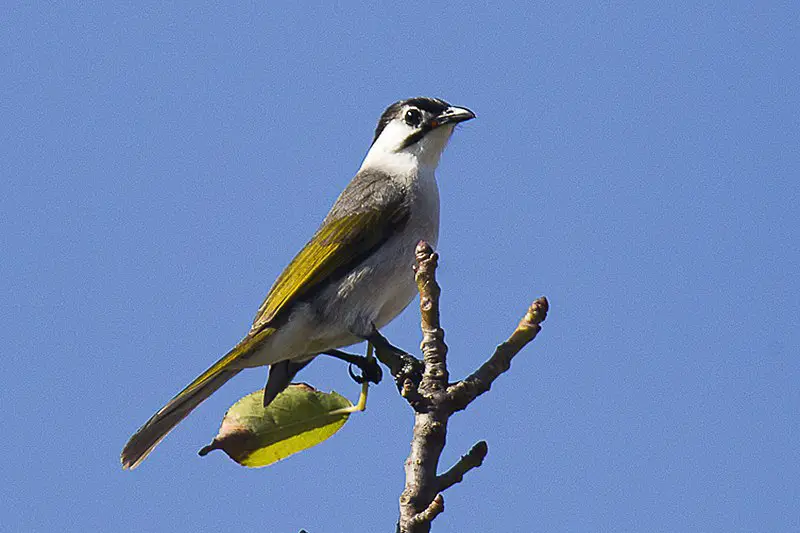
Styan’s bulbul is a species of bird found exclusively in the eastern and southern parts of Taiwan.
Despite being abundant in certain areas, the species is classified as vulnerable due to habitat degradation and hybridisation with the Chinese or light-vented bulbul.
This decline is caused by overlapping ranges of the two species, an unfortunate consequence of habitat destruction.
The bulbul is endemic to Taiwan and is known for its distinct black-and-yellow colouration. These birds are commonly found in small flocks and have a distinct, cheerful song.
Conservation efforts are underway to protect Styan’s bulbul and prevent further decline of this unique bird species.
Scientific classification:
| Kingdom | Animalia |
| Phylum | Chordata |
| Class | Aves |
| Order | Passeriformes |
| Family | Pycnonotidae |
| Genus | Pycnonotus |
| Species | P. taivanus |
36. Taiwan Barwing
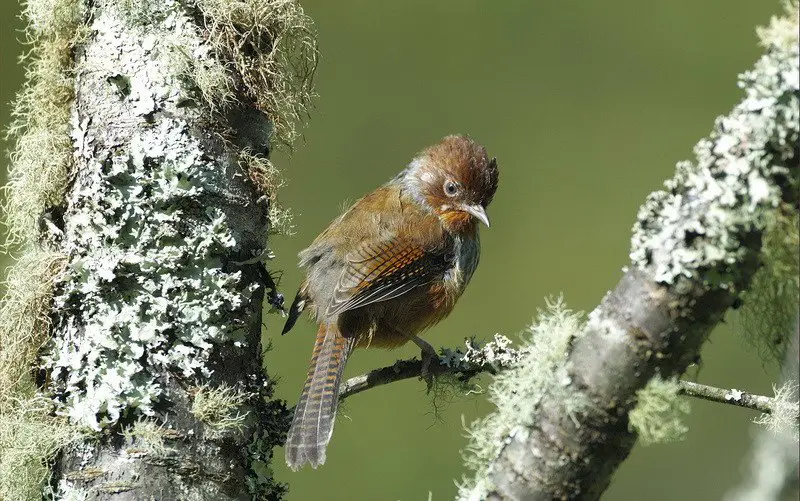
The Taiwan barwing bird is a Leiothrichidae species exclusively found in Taiwan. It inhabits temperate forests and subtropical or tropical moist lowland forests.
The bird has a distinctive dark brown and white plumage with a rufous patch on its crown. Its slender body and long tail lend it a graceful appearance as it perches on tree branches.
The Taiwan barwing bird is known for its melodious calls that echo through the woods. It feeds on insects and small invertebrates and forages for food in shrubs and undergrowth. This bird species requires a suitable habitat for nesting and breeding.
Experts suggest conservation efforts to prevent threats from habitat loss and fragmentation. The Taiwan barwing bird is a vital member of Taiwan’s forest ecosystem, and its conservation is crucial for the environment’s well-being.
Scientific classification:
| Kingdom | Animalia |
| Phylum | Chordata |
| Class | Aves |
| Order | Passeriformes |
| Family | Leiothrichidae |
| Genus | Actinodura |
| Species | A. morrisoniana |
37. Taiwan Barbet
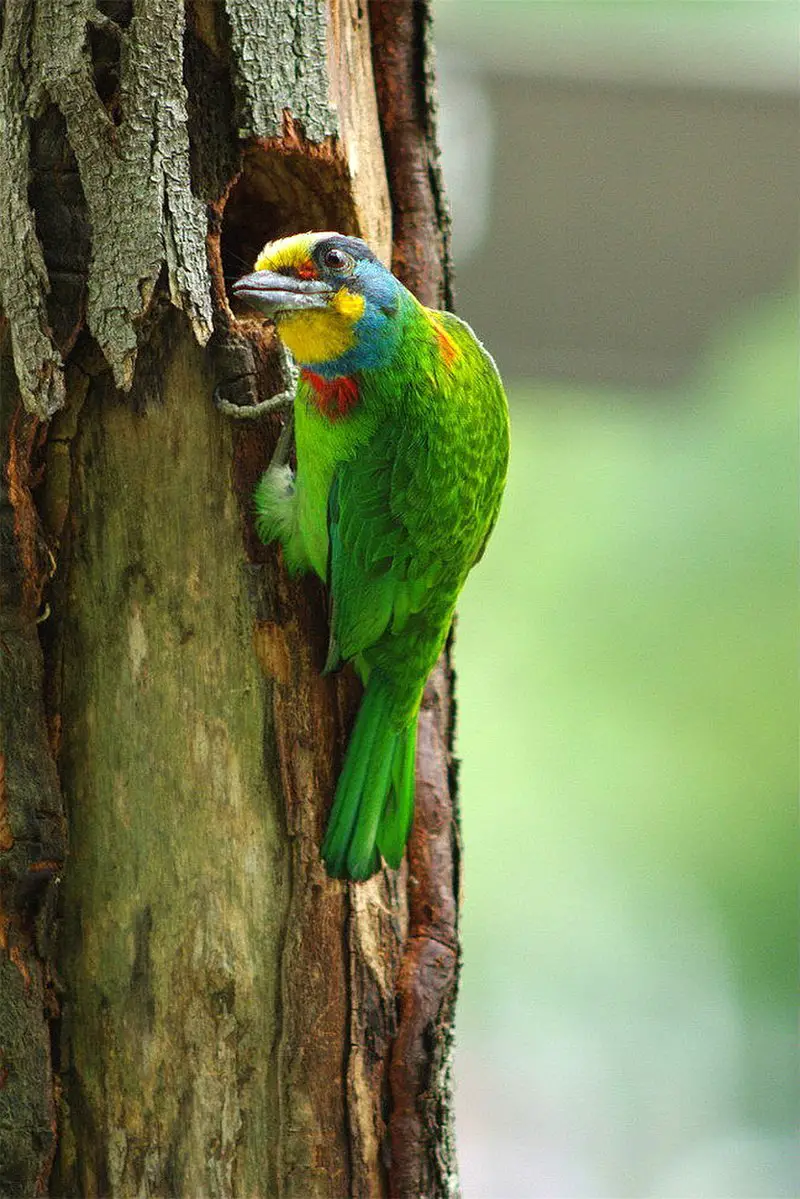
The Taiwan barbet, also known as the embroidered barbet, is a unique species of bird found only in Taiwan.
Previously believed to be a subspecies of the black-browed barbet, it is now classified under the genus Psilopogon.
This beautiful bird is approximately 20 cm long and has green plumage with a distinctive red spot on the lore.
Additionally, the ear-coverts and lower malar of the Taiwan barbet are a striking blue color. As an endemic species, the Taiwan barbet plays an important role in the country’s ecosystem and biodiversity.
With its beautiful appearance and important ecological functions, the Taiwan barbet is a treasured part of Taiwan’s natural heritage.
Scientific classification:
| Kingdom | Animalia |
| Phylum | Chordata |
| Class | Aves |
| Order | Piciformes |
| Family | Megalaimidae |
| Genus | Psilopogon |
| Species | P. nuchalis |
38. White-Eared Sibia
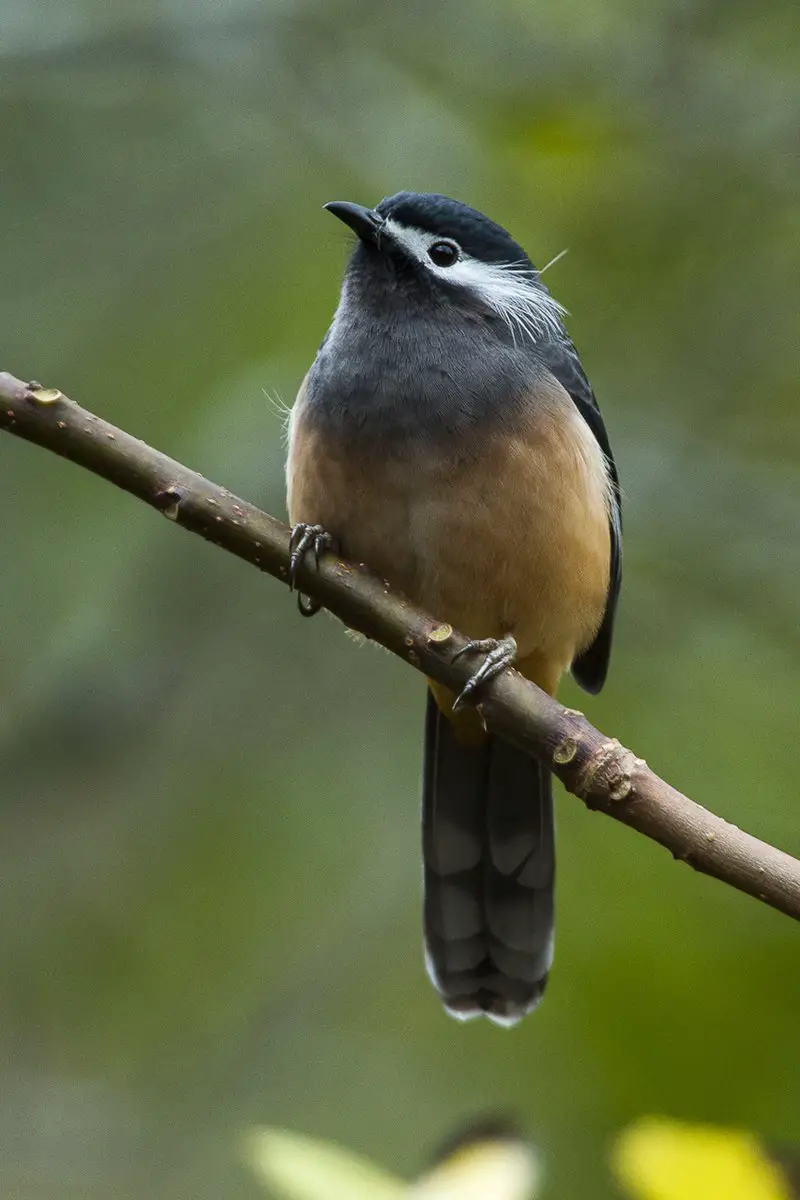
The White-eared sibia is a bird found only in Taiwan. It is a member of the laughingthrush family and is sometimes classified in its own genus.
This species is a partial altitudinal migrant, meaning that it breeds at different elevations throughout the year.
It is typically found in forests and woodlands. The White-eared sibia has no known subspecies. Robert Swinhoe was the first to describe this bird in 1864.
Scientific classification:
| Kingdom | Animalia |
| Phylum | Chordata |
| Class | Aves |
| Order | Passeriformes |
| Family | Leiothrichidae |
| Genus | Heterophasia |
| Species | H. auricularis |
39. Taiwan Yuhina
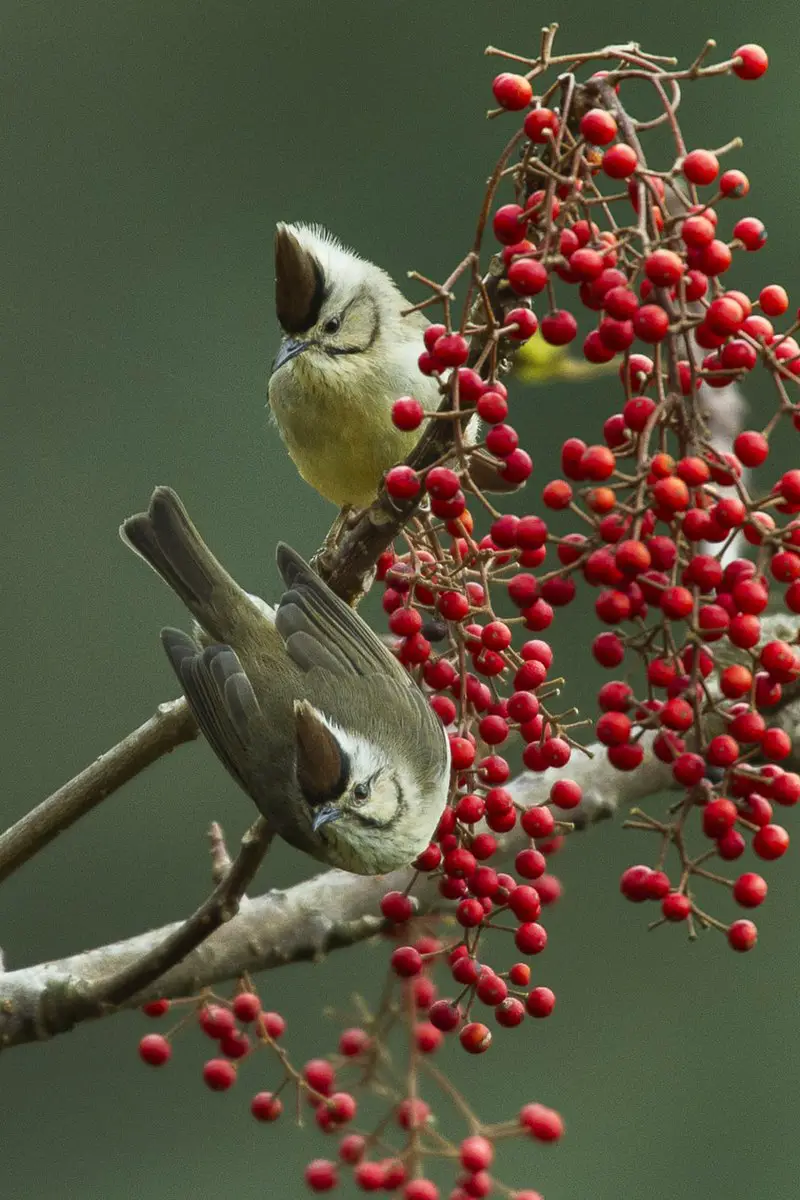
The Taiwan yuhina is a tiny bird species that is endemic to Taiwan. This bird is closely related to white-eyes, and if they were considered a separate family, it would be categorized accordingly.
It belongs to the Old World babbler Timaliidae family together with white-eyes. This species is also known as Formosan yuhina bird, and it is closely related to other yuhinas. The bird’s scientific name is Yuhina brunneiceps, and it is a small songbird.
Even though it is found only in Taiwan, it is well known among birdwatchers who visit the region.
Scientific classification:
| Kingdom | Animalia |
| Phylum | Chordata |
| Class | Aves |
| Order | Passeriformes |
| Family | Zosteropidae |
| Genus | Yuhina |
| Species | Y. brunneiceps |
40. Taiwan Whistling Thrush
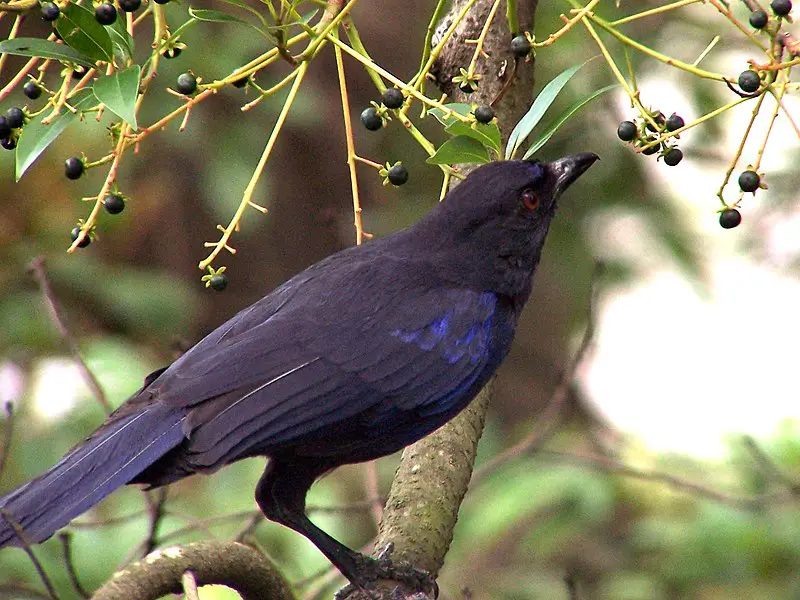
The Taiwan whistling thrush, found only in Taiwan, belongs to the family Muscicapidae. It was first noted and classified by Robert Swinhoe and later described as Myiophoneus insularis by John Gould.
The bird is also known as the Formosan whistling thrush and is famous for its whistle-like calls.
The bird is primarily found in dark, forested ravines, and its habitat has led to it being called the “Formosan cavern-bird” by Swinhoe.
The Taiwan whistling thrush has a distinct coloration of blue feathers, which make it easily recognizable. It is an endemic species that is of utmost importance in Taiwan’s ecosystem.
Its unique characteristics and importance make it a popular subject for ornithologists and birdwatchers alike.
Scientific classification:
| Kingdom | Animalia |
| Phylum | Chordata |
| Class | Aves |
| Order | Passeriformes |
| Family | Muscicapidae |
| Genus | Myophonus |
| Species | M. insularis |
41. Steere’s Liocichla
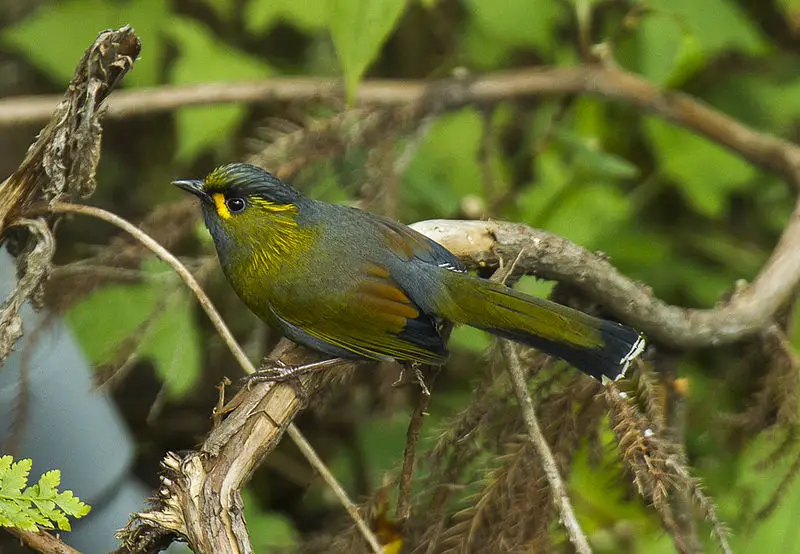
Steere’s liocichla is a vibrant species of bird found only in Taiwan. This species belongs to the Leiothrichidae family and was first discovered and described by Robert Swinhoe in 1877.
These birds are known for their beautiful coloration and melodious songs. They have a unique plumage that consists of a combination of green, blue, and dark brown feathers.
Steere’s liocichla is a small bird that usually inhabits dense forests, where it feeds on insects and small fruits.
These birds are shy and elusive, making them difficult to spot in the wild.
Despite being native only to Taiwan, Steere’s liocichla has garnered a lot of attention among bird enthusiasts worldwide, owing to its rare and exquisite beauty.
Scientific classification:
| Kingdom | Animalia |
| Phylum | Chordata |
| Class | Aves |
| Order | Passeriformes |
| Family | Leiothrichidae |
| Genus | Liocichla |
| Species | L. steerii |
42. Collared Bush Robin
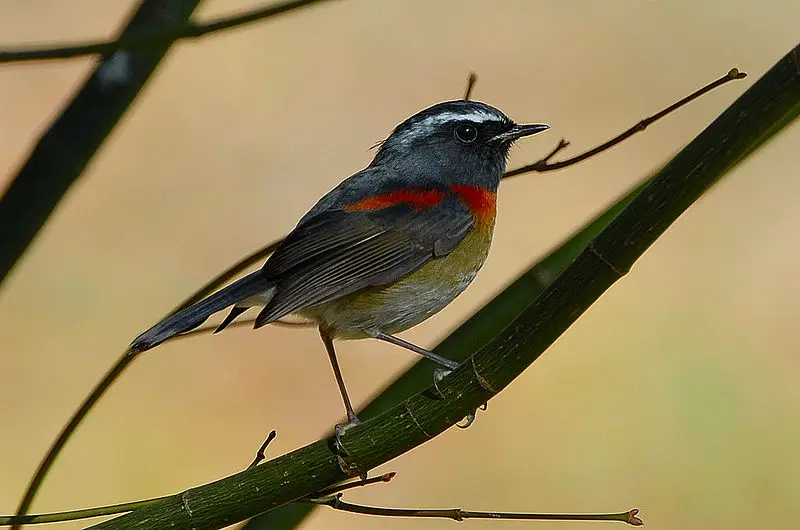
The Collared bush robin, also known as Johnstone’s robin, is a bird found only in the forests of Taiwan’s mountains and subalpine areas.
It belongs to the Muscicapidae family and was initially described as Ianthia johnstoniae by William Robert Ogilvie-Grant in 1906.
Despite being a rare species, the International Union for Conservation of Nature (IUCN) has classified it as a least-concern species.
This bird has a unique and striking appearance, with a bright orange chest and a black collar around its neck.
Its natural habitat is being threatened due to deforestation, but conservation efforts are in place to protect its population.
The Collared bush robin’s beautiful colors and endemic status make it a prized sight among birdwatchers and nature enthusiasts.
Scientific classification:
| Kingdom | Animalia |
| Phylum | Chordata |
| Class | Aves |
| Order | Passeriformes |
| Family | Muscicapidae |
| Genus | Tarsiger |
| Species | T. johnstoniae |
43. Taiwan Bush Warbler
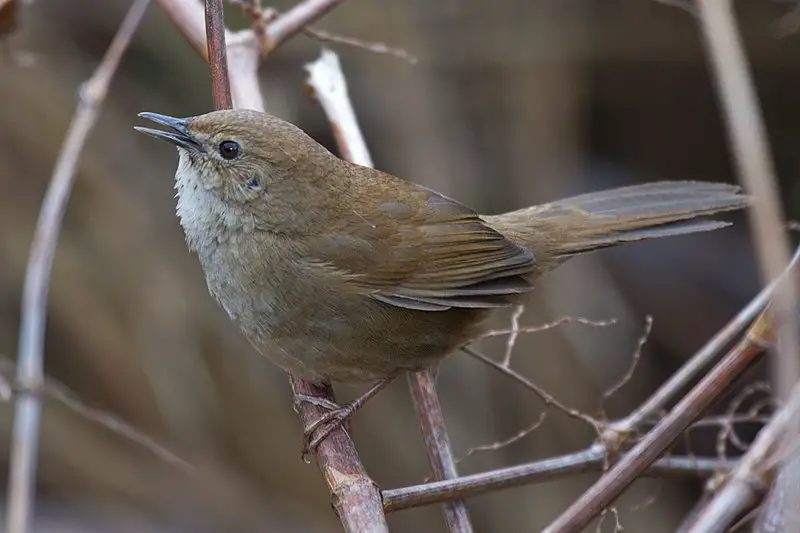
The Taiwan bush warbler is a unique species of bird found exclusively in Taiwan. It tends to inhabit undergrowth and grassland at higher elevations, ranging from 1,200 to 3,000 meters.
This Old World warbler was first documented in 1917, but was not identified as a distinct species until 2000.
Despite its relatively recent discovery, the International Union for Conservation of Nature (IUCN) has classified the Taiwan bush warbler as a species of least concern, meaning it is not considered to be at immediate risk of extinction.
As such, it remains an important part of Taiwan’s biodiversity and natural heritage.
Scientific classification:
| Kingdom | Animalia |
| Phylum | Chordata |
| Class | Aves |
| Order | Passeriformes |
| Family | Locustellidae |
| Genus | Locustella |
| Species | L. alishanensis |
44. Megalaimidae

The Megalaimidae birds are a family of species found in the forests of the Indomalayan region. They belong to two genera and include 34 different types.
These birds were once classified as part of the Capitonidae family, but they have since been recognized as distinct. They are closely related to the Lybiidae and Ramphastidae bird families.
Megalaimidae birds have colorful plumage and are known for their distinctive barb-shaped feathers on their bills.
They are active during the day and primarily feed on fruits, insects, and occasionally small animals.
Some species of Megalaimidae birds, such as the brown-headed barbet, are popular among birdwatchers and can be seen in backyard gardens and parks.
Overall, the Megalaimidae bird family is important for maintaining the biodiversity of the forests they inhabit.
Scientific classification:
| Kingdom | Animalia |
| Phylum | Chordata |
| Class | Aves |
| Order | Piciformes |
| Infraorder | Ramphastides |
| Family | Megalaimidae Blyth, 1852 |
Also Featured In: Birds that Live in Tamil Nadu, Birds of Andhra Pradesh
45. Taiwan Vivid Niltava
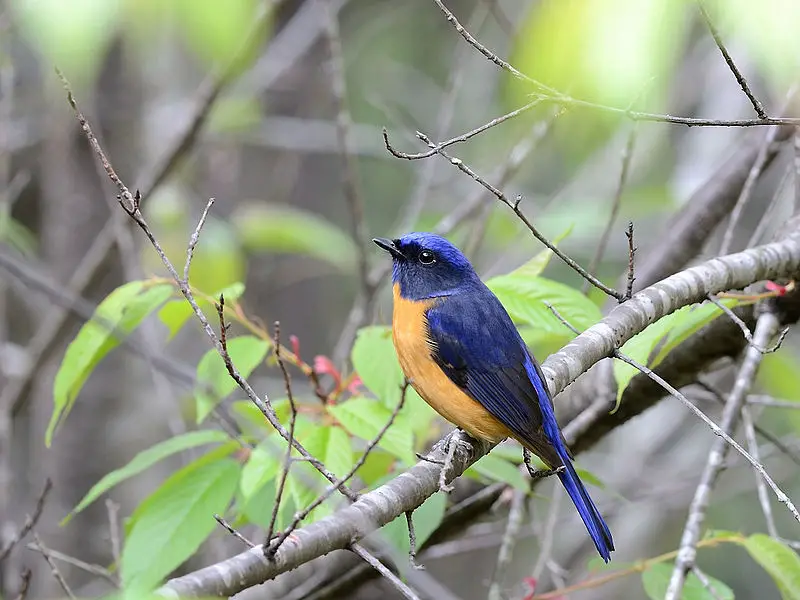
The Taiwan vivid niltava, also known as small vivid niltava, is a bird species found only in Taiwan. It belongs to the Muscicapidae family and was first identified by Robert Swinhoe in 1864.
The bird prefers subtropical or tropical moist montane forests as its natural habitat. Unlike its larger counterpart, the Chinese vivid niltava found in the Asian mainland, the Taiwan vivid niltava is a smaller bird.
Being an endemic species of Taiwan, the Taiwan vivid niltava is of significant conservation importance.
With its vibrant and colorful appearance, it adds to the biodiversity of the island ecosystem. Thus, the bird is treasured by bird enthusiasts and has become a symbol of Taiwan’s rich avian fauna.
Scientific classification:
| Kingdom | Animalia |
| Phylum | Chordata |
| Class | Aves |
| Order | Passeriformes |
| Family | Muscicapidae |
| Genus | Niltava |
| Species | N. vivida |
46. Ashy Wood Pigeon
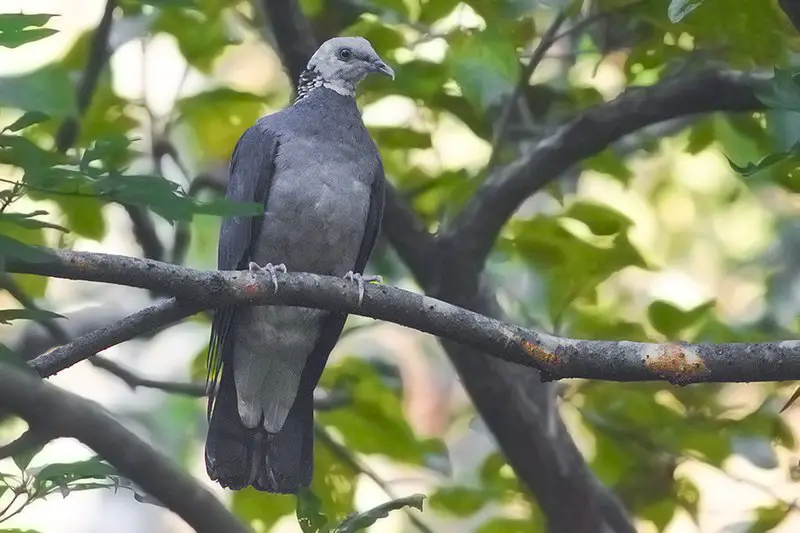
The Ashy wood pigeon is a bird species found in temperate forests of Southeast Asia. They have a wide range throughout Bhutan, India, Tibet, China, Laos, Myanmar, Thailand, and Taiwan.
The size of the world population is unknown, but they are known for their beauty with their grey and white feathers. They belong to the family Columbidae and are known for their cooing sounds.
The Ashy wood pigeons are important for seed dispersal and plays a crucial role in maintaining the ecosystem. The nests are usually made of twigs and they lay a single egg at a time.
The species is protected by some governments and NGOs to improve their population as they play an essential role in the forest ecosystem.
Scientific classification:
| Kingdom | Animalia |
| Phylum | Chordata |
| Class | Aves |
| Order | Columbiformes |
| Family | Columbidae |
| Genus | Columba |
| Species | C. pulchricollis |
47. House Swift
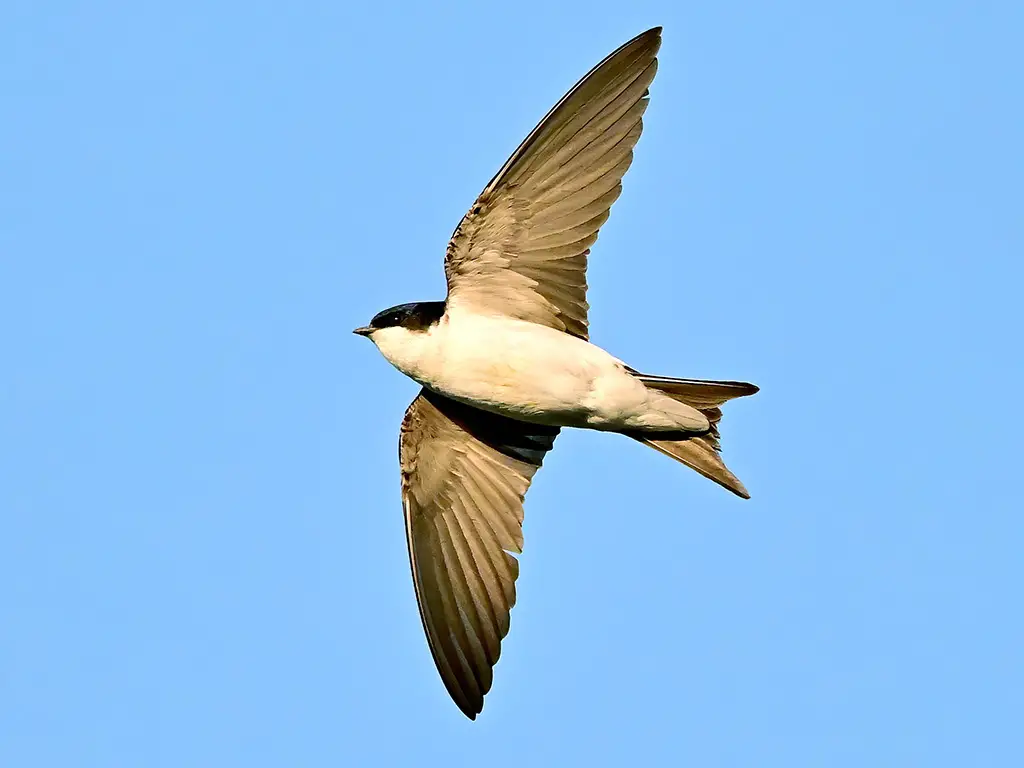
The House Swift is a unique species of bird that can be found in Japan, Nepal, and Southeast Asia.
They have the impressive ability to fly long distances by shutting off one hemisphere of their brain at a time.
In 2012, a House Swift was spotted in Ladner, British Columbia, making it the first sighting of this species in North America.
Although it was once thought to be a subspecies of the Little Swift, it is now recognized as its own distinct species.
These birds are known for their swift and graceful flight patterns and their ability to nest in crevices and holes.
The House Swift is an interesting bird to observe and study, and its unique adaptations make it a fascinating member of the Apodidae family.
Scientific classification:
| Kingdom | Animalia |
| Phylum | Chordata |
| Class | Aves |
| Clade | Strisores |
| Order | Apodiformes |
| Family | Apodidae |
| Genus | Apus |
| Species | A. nipalensis |
Also Featured In: Birds Commonly Found in Kyoto, Common Birds of Lombok
48. Yellow-Bellied Bush Warbler
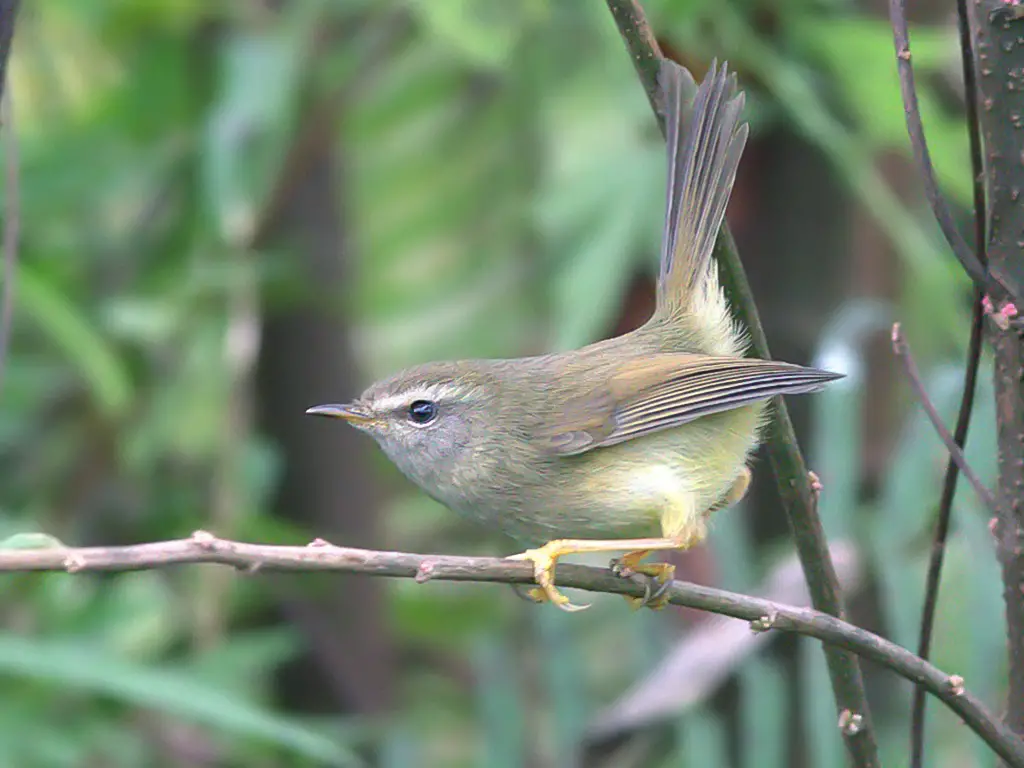
The yellow-bellied bush warbler, also known as the yellowish-bellied bush warbler, is a bird species belonging to the family Cettiidae. It can be found in both mainland China and Taiwan.
Due to its distinct coloration, it is easily distinguishable from other bird species. It was formerly classified as part of the “Old World warbler” group.
Interestingly, Hume’s bush warbler was once considered to be the same species as the yellow-bellied bush warbler due to their similarities but they have since been separated.
Overall, the yellow-bellied bush warbler is a unique and fascinating bird species that deserves recognition and preservation.
Scientific classification:
| Kingdom | Animalia |
| Phylum | Chordata |
| Class | Aves |
| Order | Passeriformes |
| Family | Cettiidae |
| Genus | Horornis |
| Species | H. acanthizoides |
49. Crested Goshawk
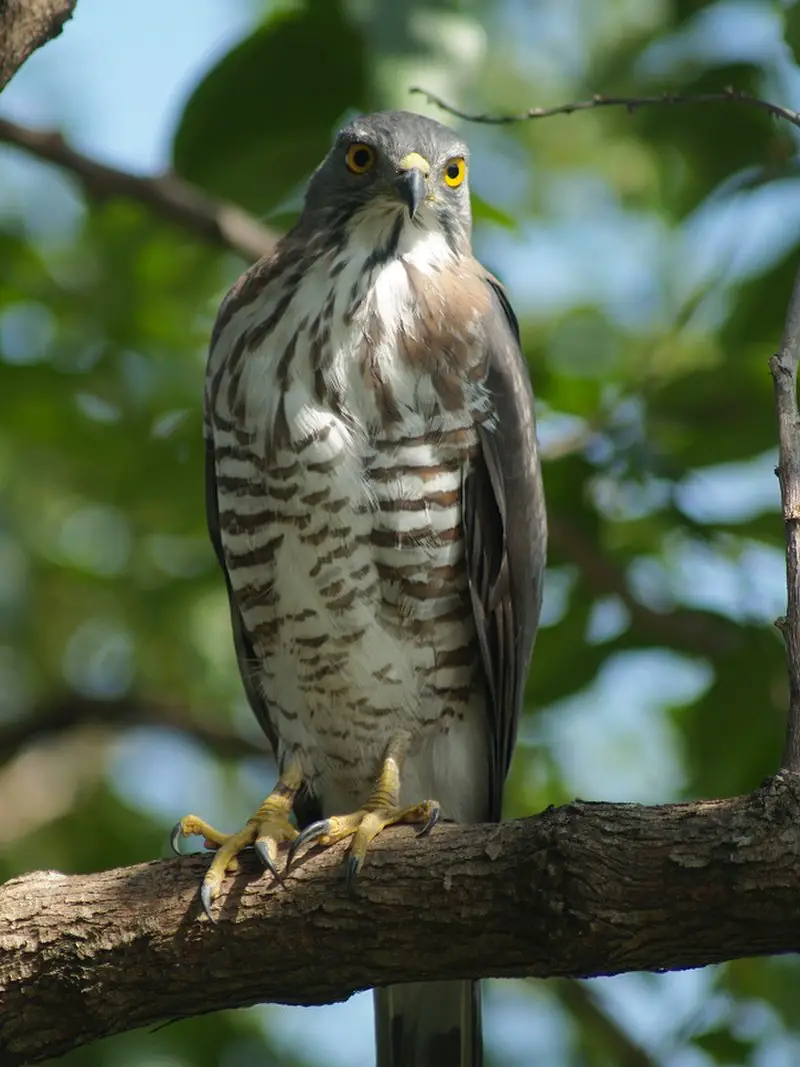
The Crested Goshawk bird is a diurnal raptor found in tropical Asia. Belonging to the Accipitridae family, it shares characteristics with buzzards, harriers, and eagles.
Its wings are short and broad, with a long tail, aiding in its movement through trees. The larger female Crested Goshawk can grow up to 46 cm in length, much bigger than the male.
These birds are skilled hunters and have adapted well to their forest habitats, using their sharp talons and beaks to catch prey.
Despite their ferocity, Crested Goshawks are still threatened by habitat destruction across Asia, rendering them vulnerable in many regions.
Overall, the Crested Goshawk bird is a graceful predator that perfectly exemplifies the beauty and ferocity of the natural world.
Scientific classification:
| Kingdom | Animalia |
| Phylum | Chordata |
| Class | Aves |
| Order | Accipitriformes |
| Family | Accipitridae |
| Genus | Accipiter |
| Species | A. trivirgatus |
Also Featured In: Birds of Goa, Common Birds that Live in Odisha
50. Mountain Scops Owl
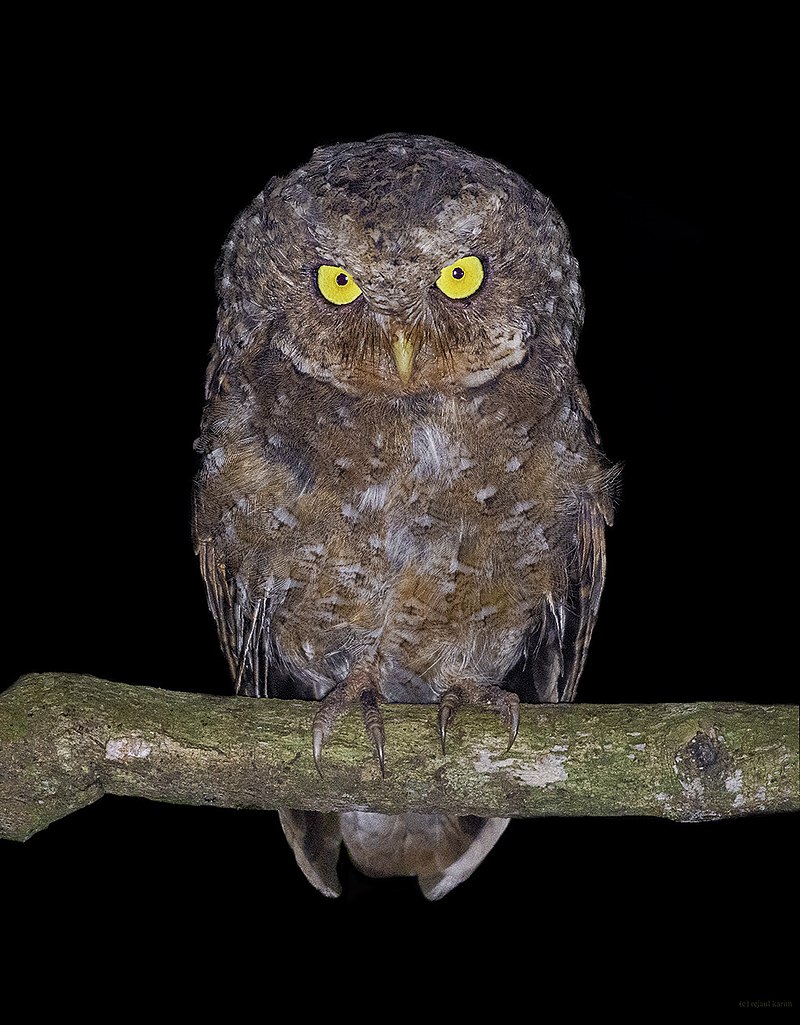
The mountain scops owl, also known as the spotted scops owl, is an owl species found in Asia, including countries like Nepal, India, and Thailand.
With a short high-pitched call, their distinctive two-note whistle sounds like “plew-plew” or “he-he”.
These birds are commonly found in their natural habitat and belong to the family Strigidae. They are known for their majestic appearance and nocturnal habits.
Mountain scops owls are not endangered, and their population is considered stable.
Overall, these birds are a fascinating part of the diverse wildlife found in Asia, and they continue to capture the imagination of bird-watchers and nature lovers worldwide.
Scientific classification:
| Kingdom | Animalia |
| Phylum | Chordata |
| Class | Aves |
| Order | Strigiformes |
| Family | Strigidae |
| Genus | Otus |
| Species | O. spilocephalus |
51. Collared Scops Owl
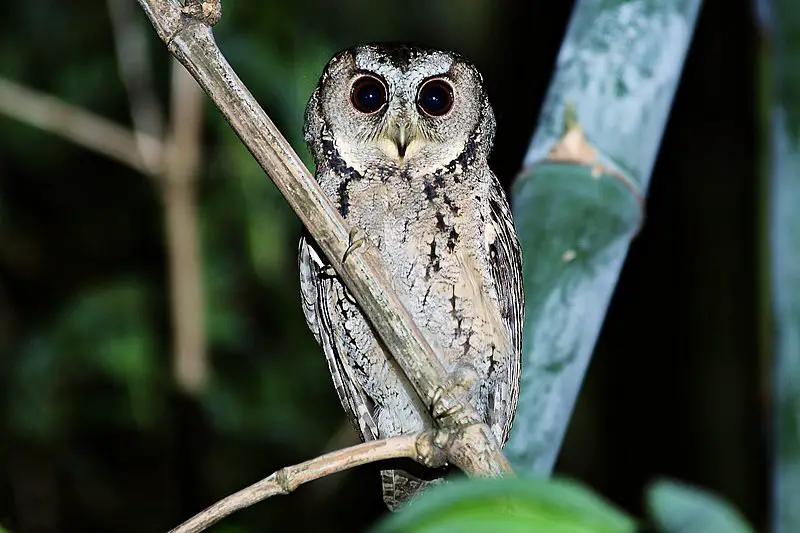
The Collared scops owl bird is a resident breeder in South Asia, primarily found in countries such as northern India, Nepal, and Pakistan.
It is a partially migratory bird, with some of its species wintering in Malaysia, Sri Lanka, and India.
The owl is known for its unique collar-like feather pattern around its neck, which distinguishes it from other owl species.
It prefers to dwell in forested areas and feeds on insects, small rodents, and other small prey.
The Collared scops owl is relatively small in size, with a height of around 25 cm and a wingspan of 60 to 70 cm.
Despite being found in several countries, this bird’s population has declined due to habitat loss and deforestation, making it a vulnerable species in the region.
Scientific classification:
| Kingdom | Animalia |
| Phylum | Chordata |
| Class | Aves |
| Order | Strigiformes |
| Family | Strigidae |
| Genus | Otus |
| Species | O. lettia |
Also Featured In: Urban Birds of Hong Kong,
Conclusion
Taiwan boasts a rich avian diversity, with 51 commonly observed bird species inhabiting its varied landscapes. From lush forests to coastal wetlands, these birds thrive in Taiwan’s diverse ecosystems, contributing to its unique biodiversity.
The island’s strategic location along bird migration routes further enhances its significance as a hotspot for birdwatching and ecological research.
Conservation efforts aimed at preserving habitats, mitigating human-wildlife conflicts, and raising awareness about the importance of birds are essential to safeguard Taiwan’s avian populations.
By prioritizing conservation initiatives and fostering sustainable practices, Taiwan can continue to cherish and protect its rich avifauna for future generations to appreciate and enjoy.